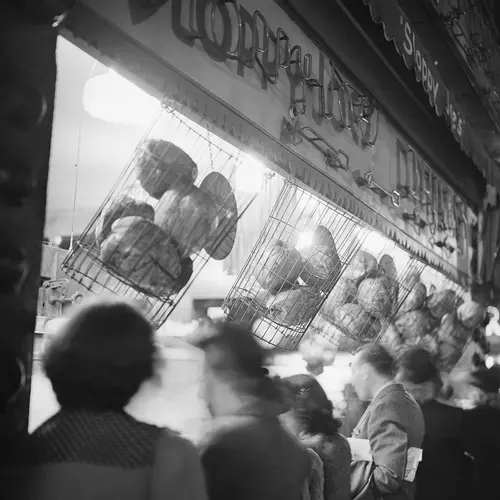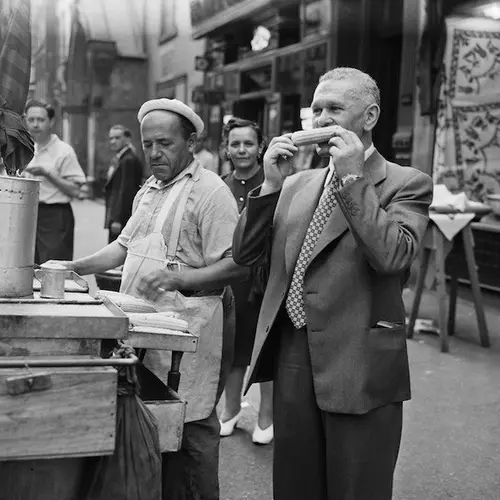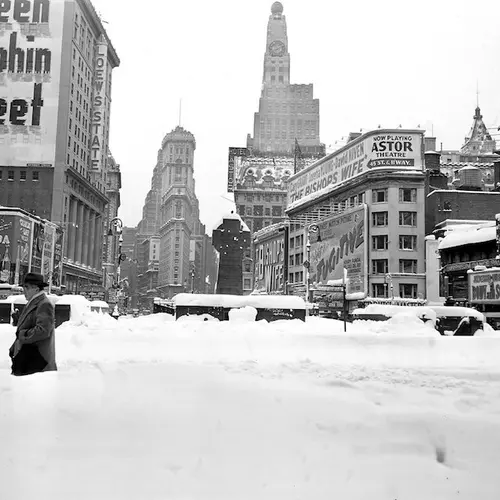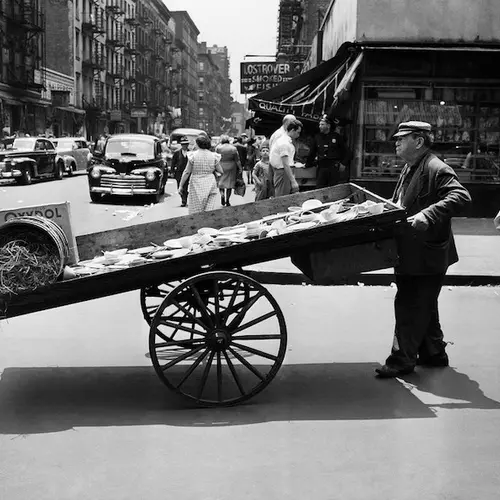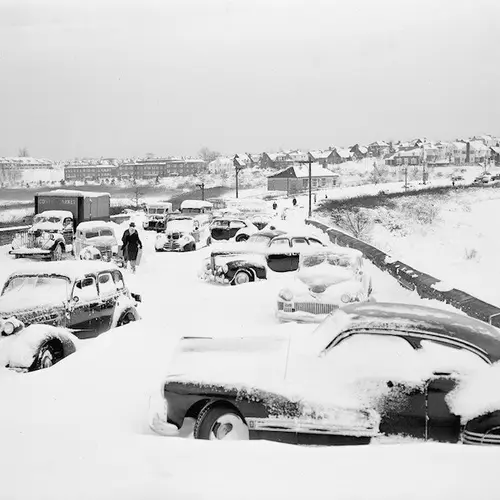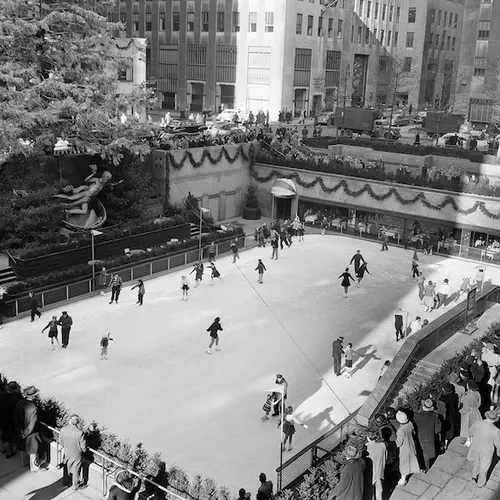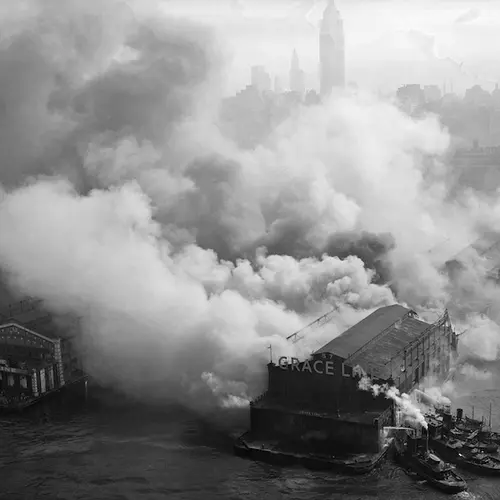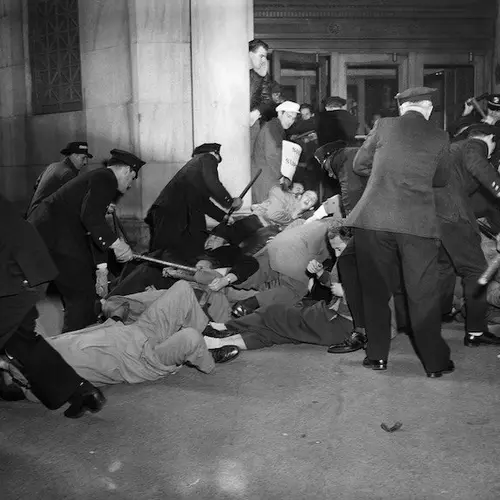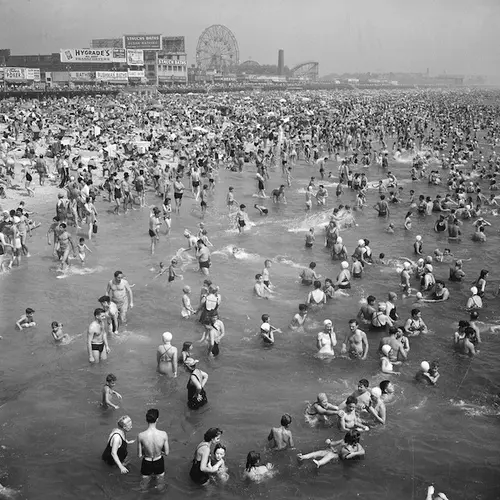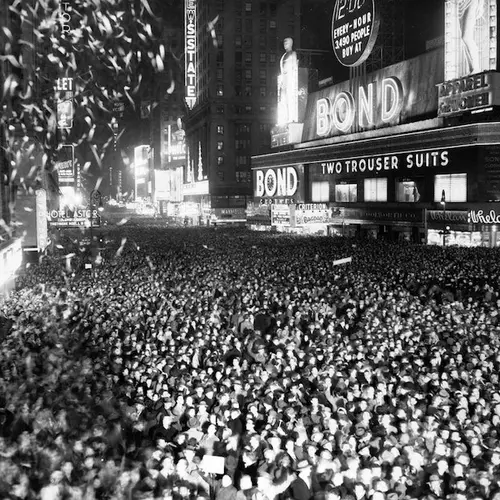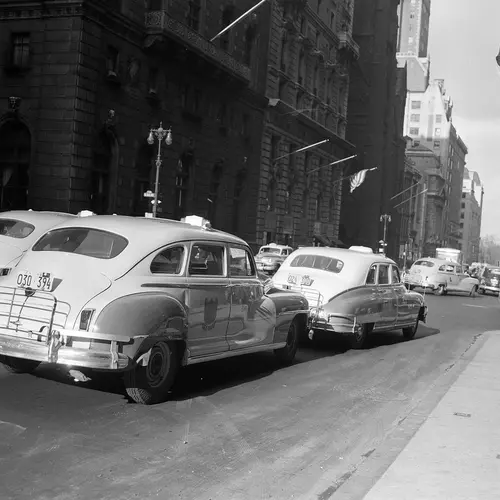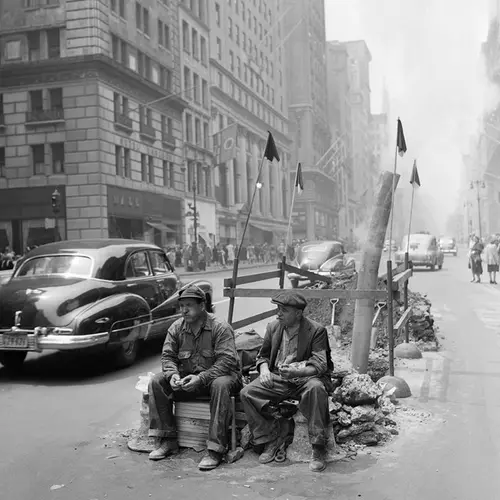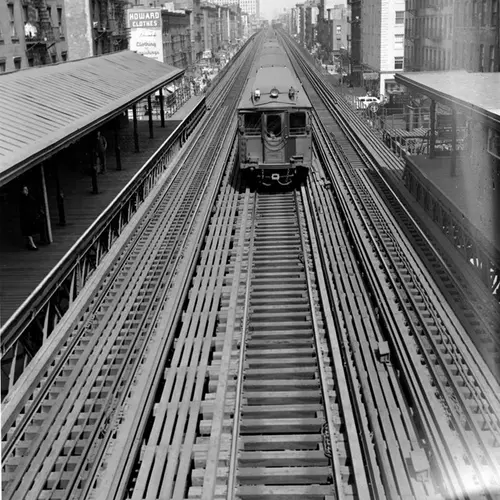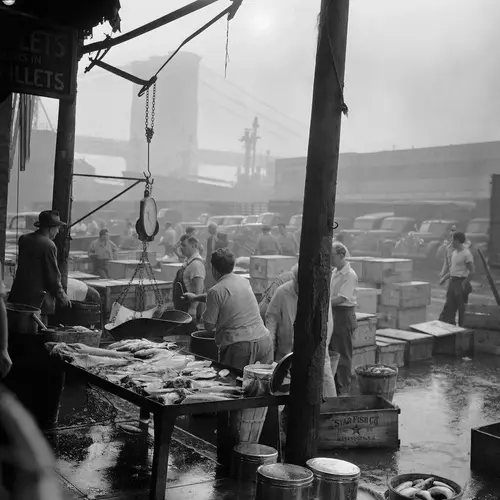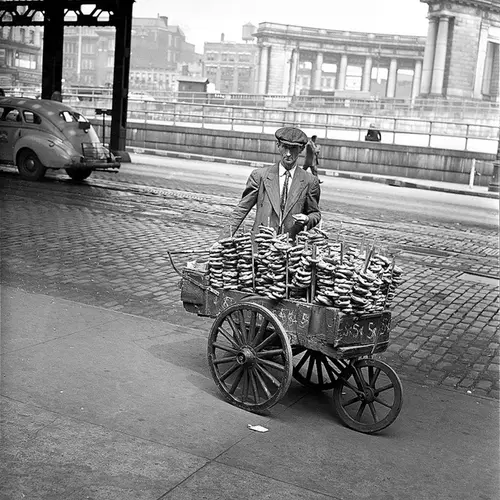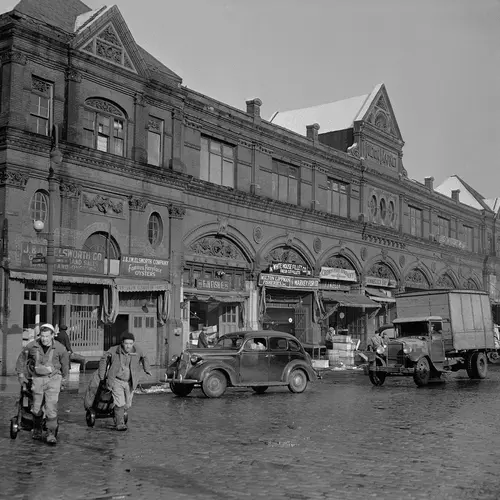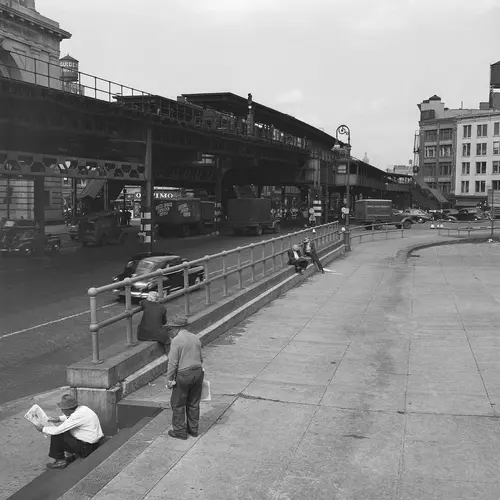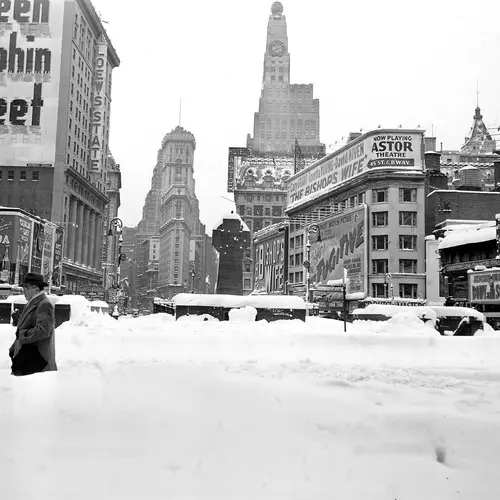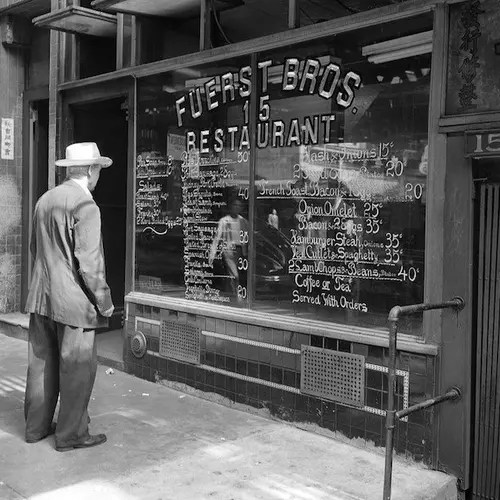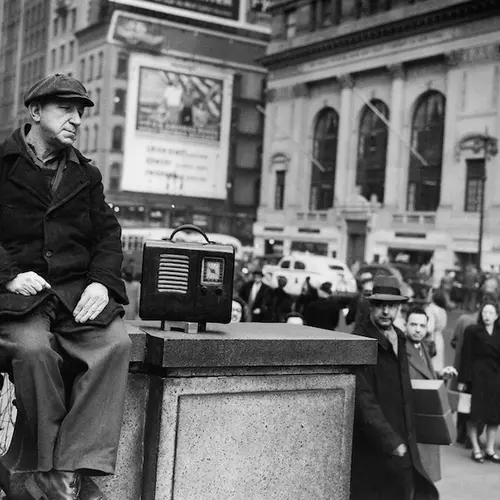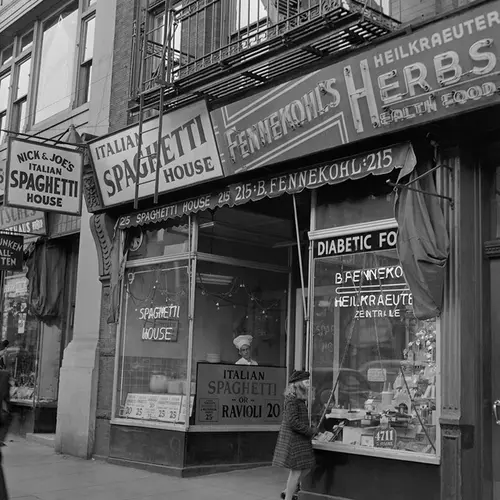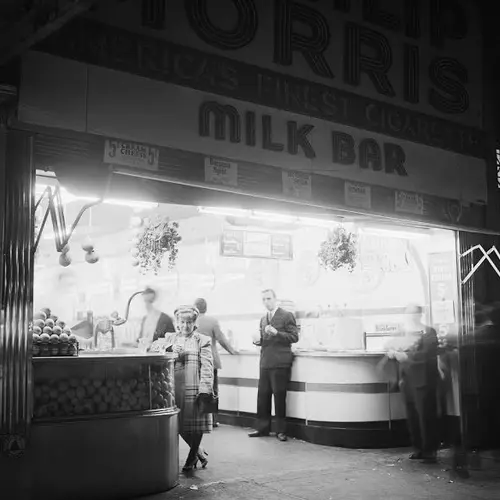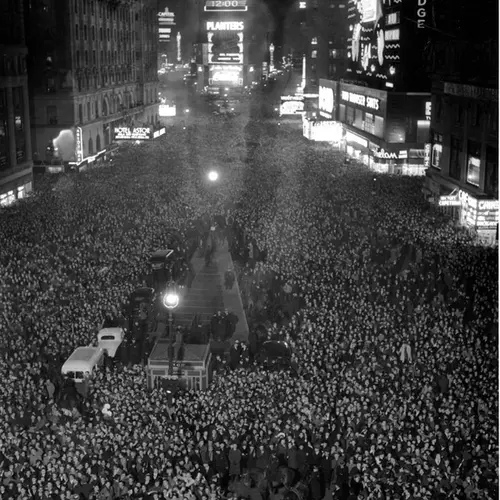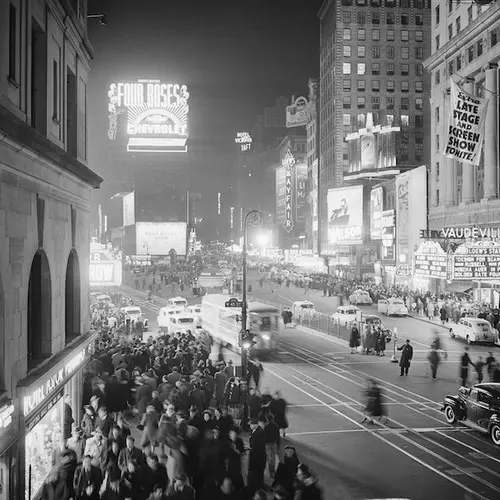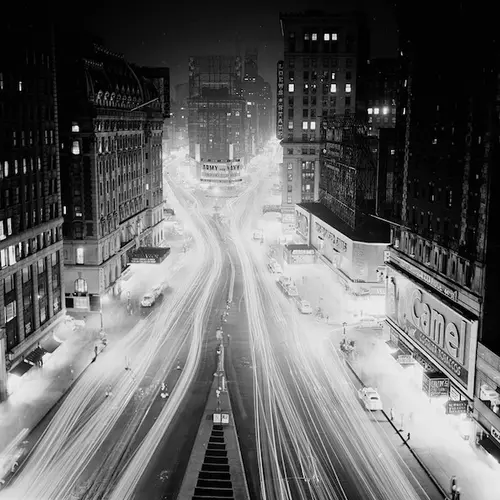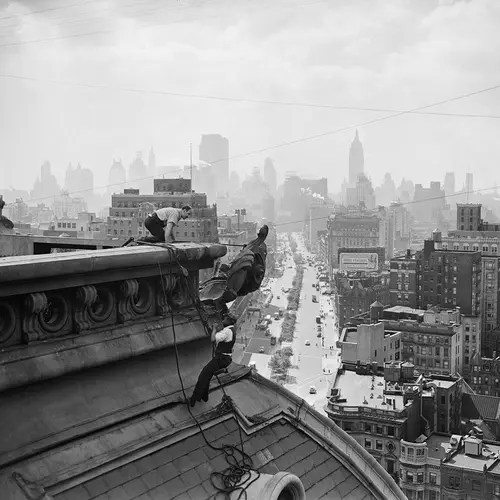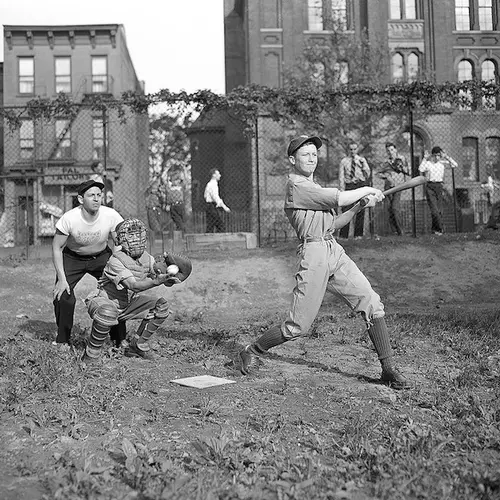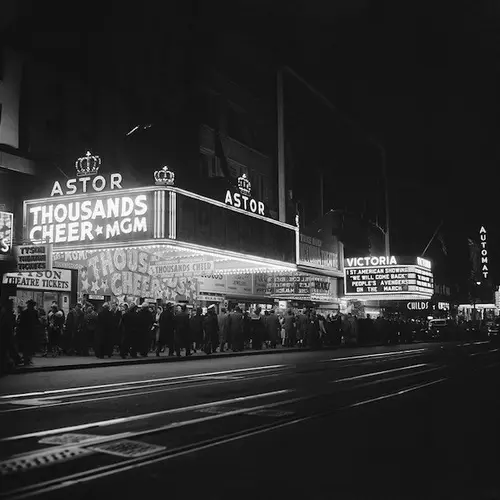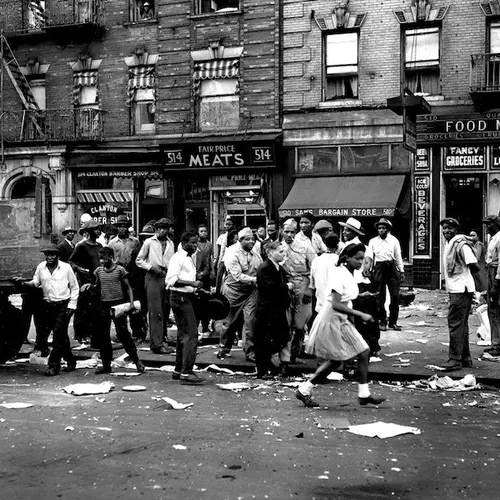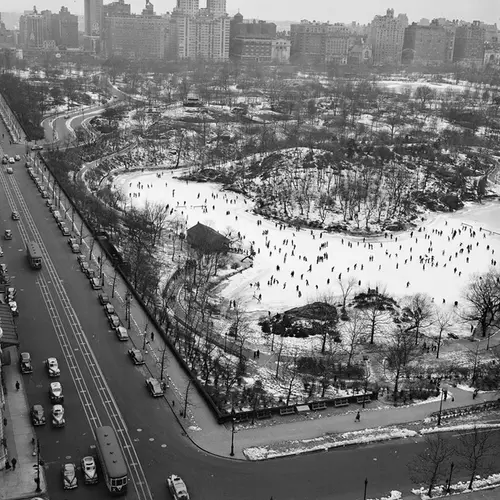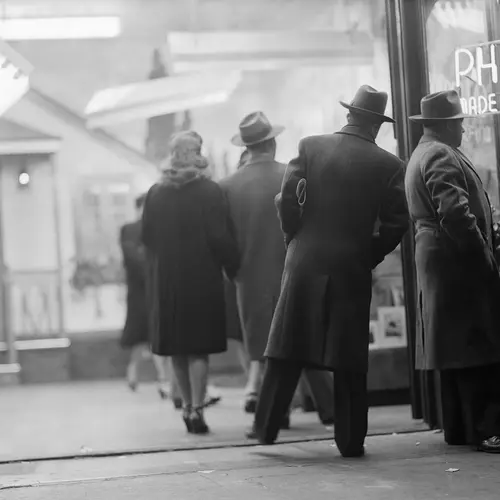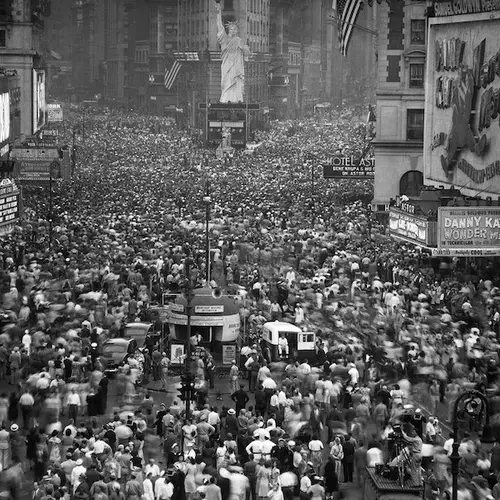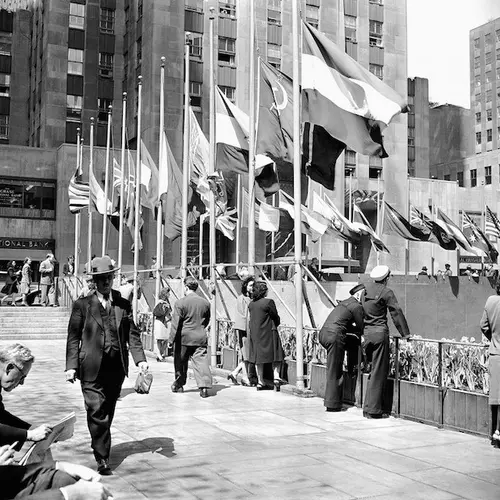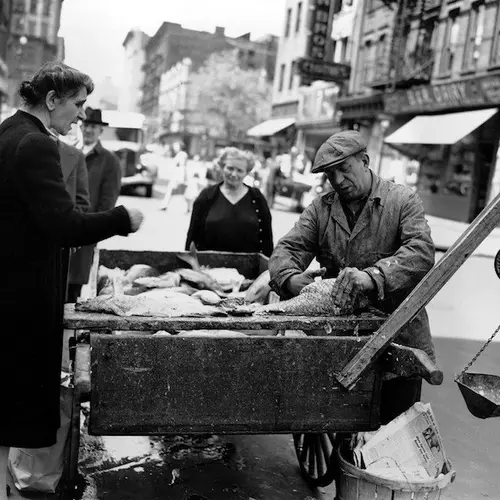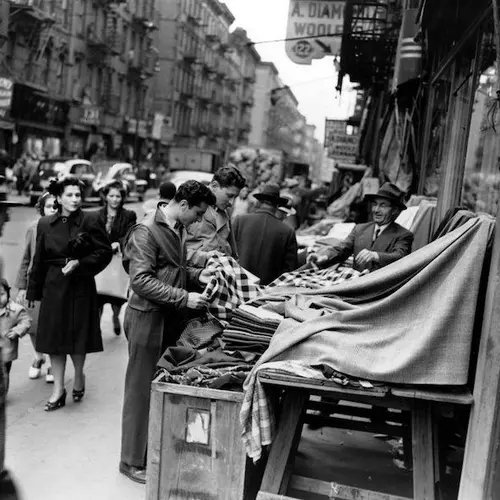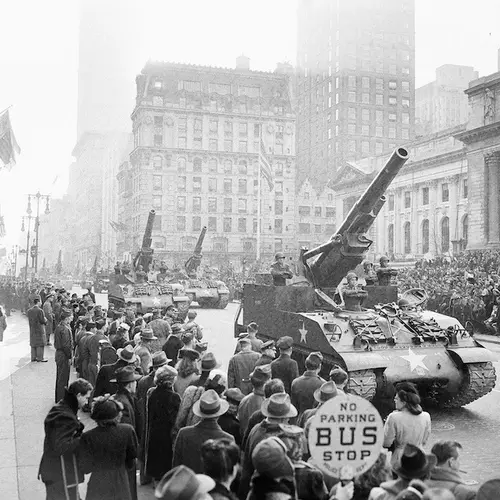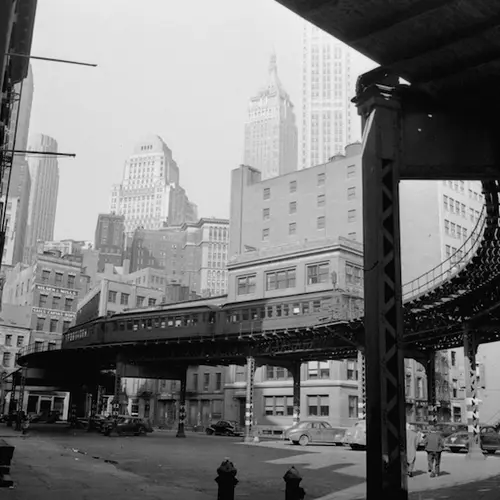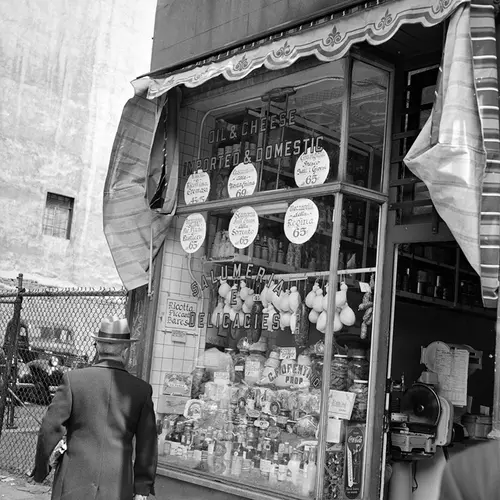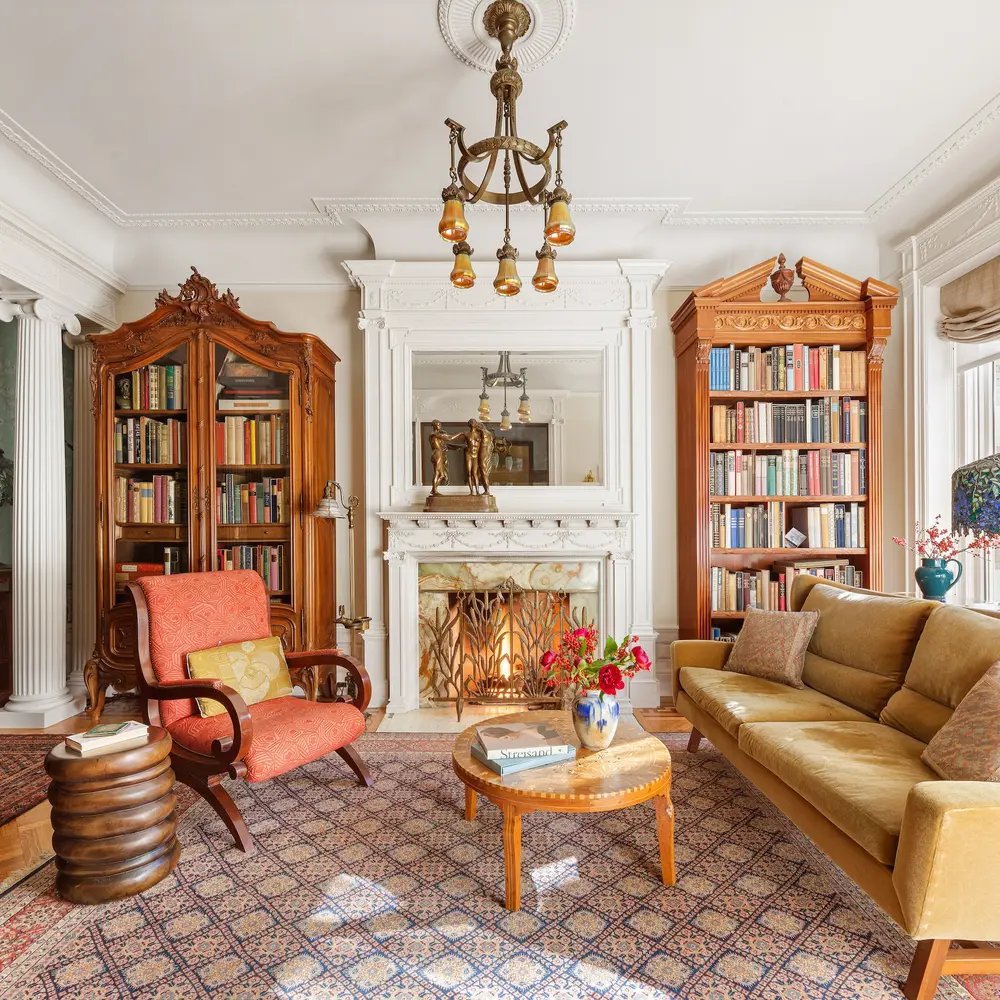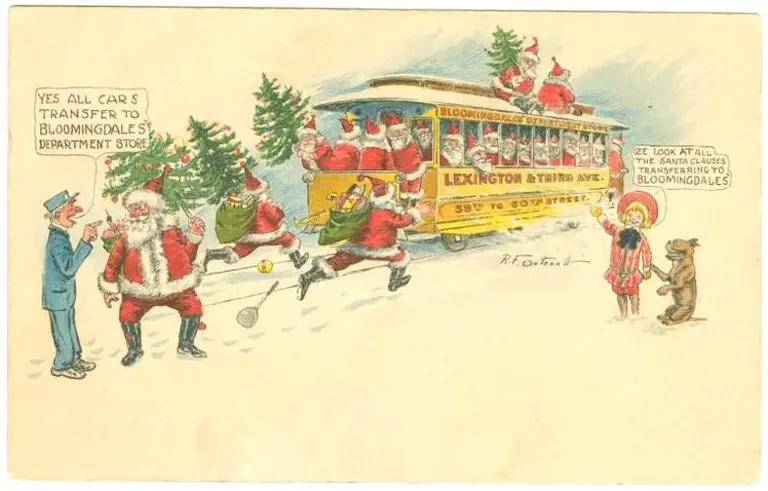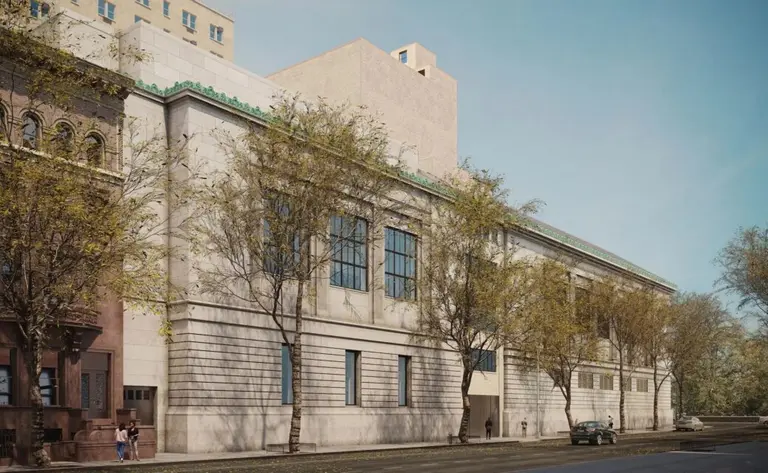The Urban Lens: Vintage NYC photos show everyday life in the 1940s
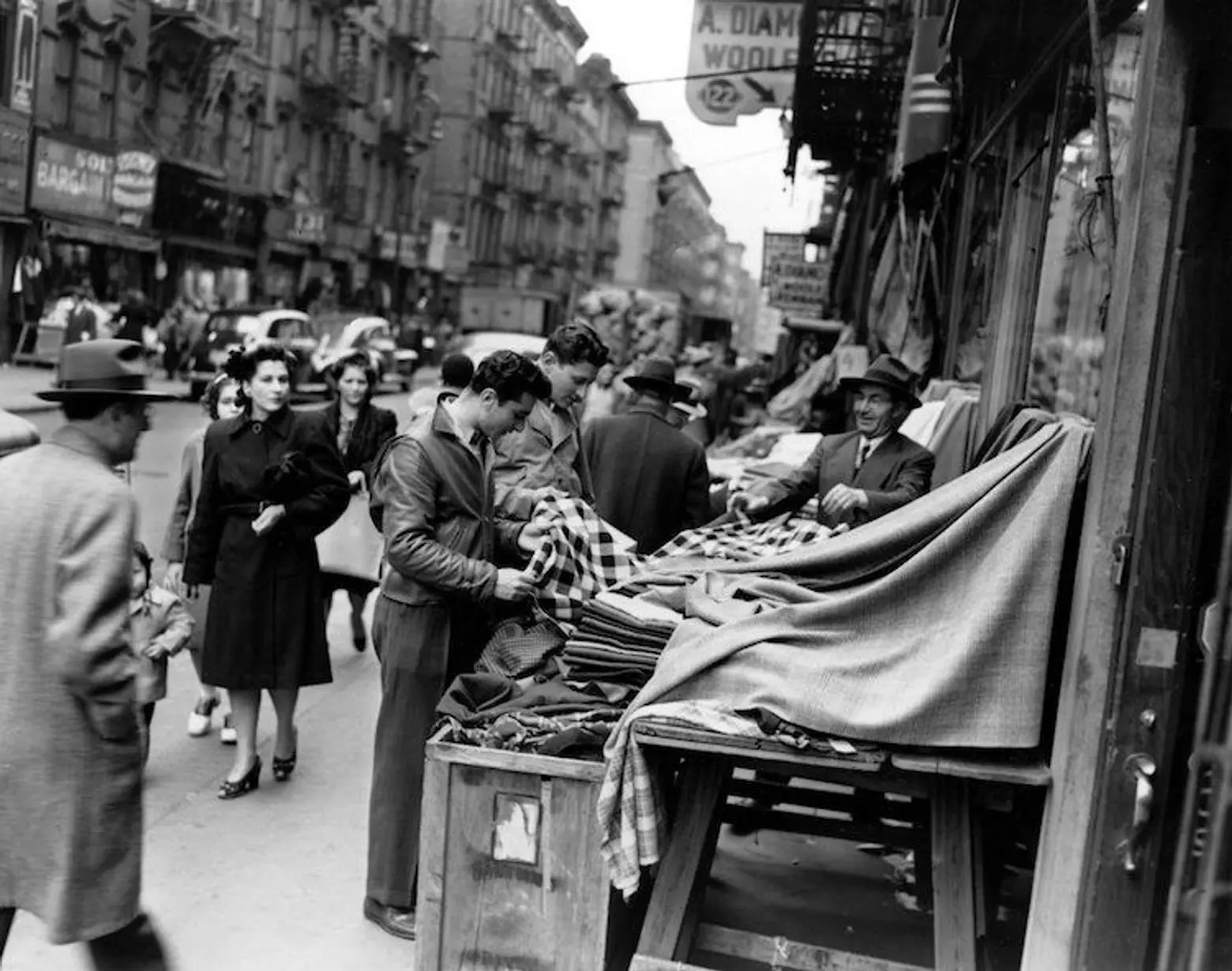
6sqft’s ongoing series The Urban Lens invites photographers to share work exploring a theme or a place within New York City. In this installment, we share a set of vintage photos documenting NYC in the 1940s. Are you a photographer who’d like to see your work featured on The Urban Lens? Get in touch with us at [email protected].
The 1940s were marked with both dark times and bright hopes. Nightly dim-outs, meant to both conserve energy and hide the skyline from possible WWII air and naval attacks, were a regular occurrence; police scuffled with citizens over race riots in Harlem and the AFL Strike on Wall Street; and President Roosevelt died. But towards the end of the decade, New Yorkers and the nation celebrated the end of the War; Times Square and Coney Island drew record crowds; and retail venues like the Fulton Fish Market and Orchard Street reached their height. Ahead, this collection of vintage photos showcases what everyday life was like in NYC in the 1940s, from the good times to the bad.
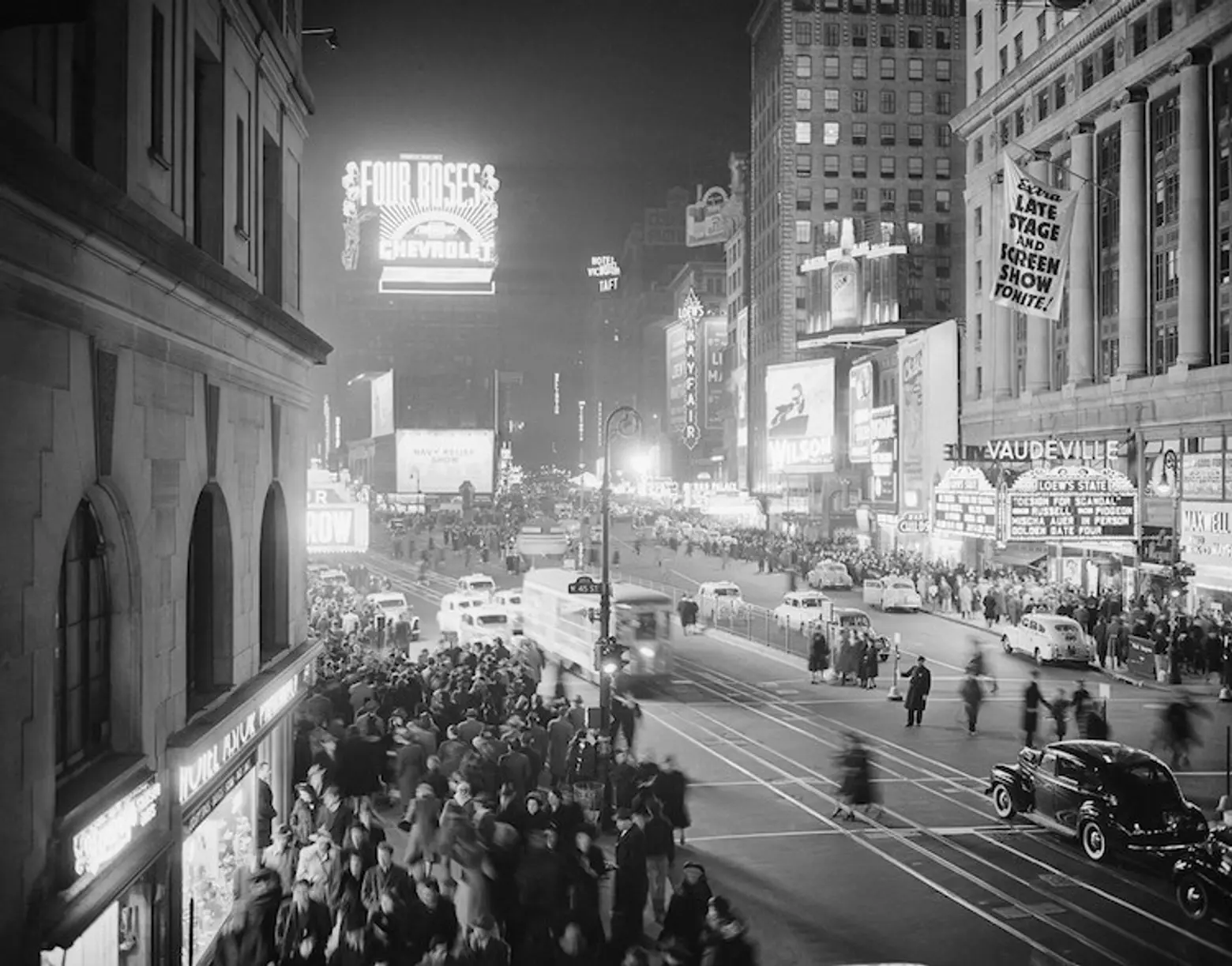
On March 1, 1942, one small switch turned off 16 signs in Times Square. The first recorded blackout or dim-out was in January of that year. An official document regulated which direction light could escape from windows, the wattage of marquis signs, and that there was to be no light above street level.
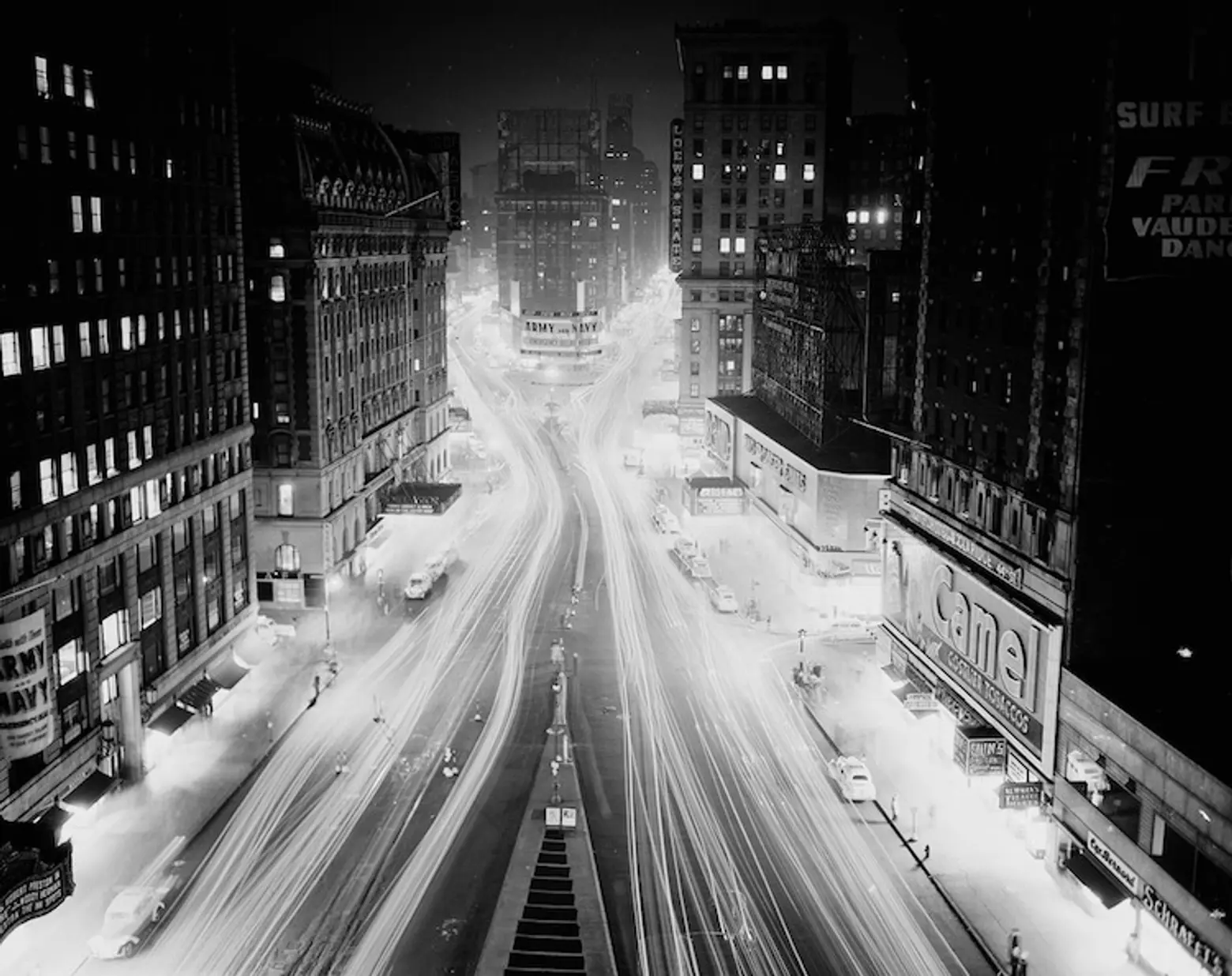
Here, on May 20, 1942, an aerial shot looking north from the New York Times Building at 42nd Street shows Times Square during a dim-out.
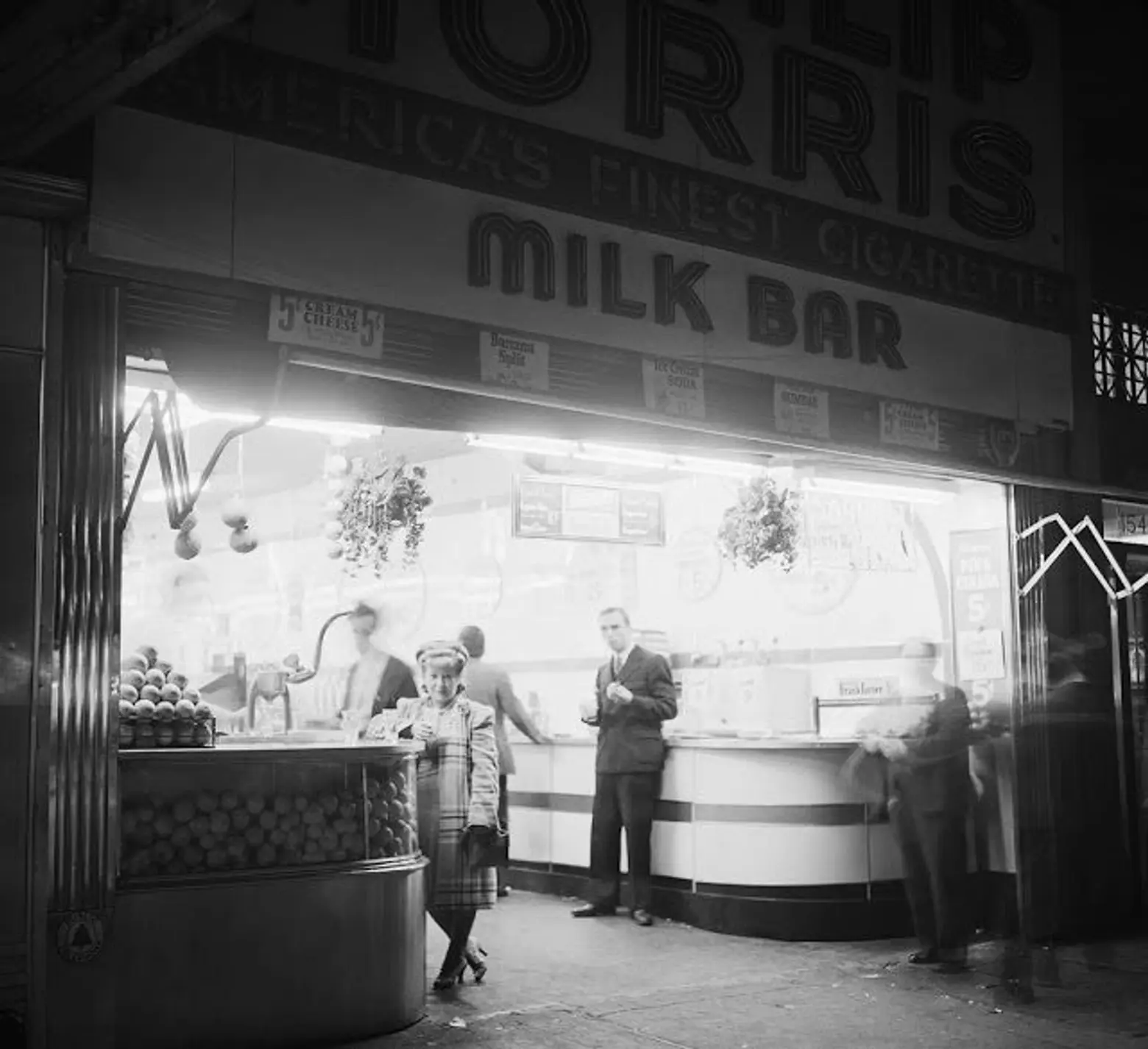
A Times Square soft drink stand amid a dim-out in 1942.
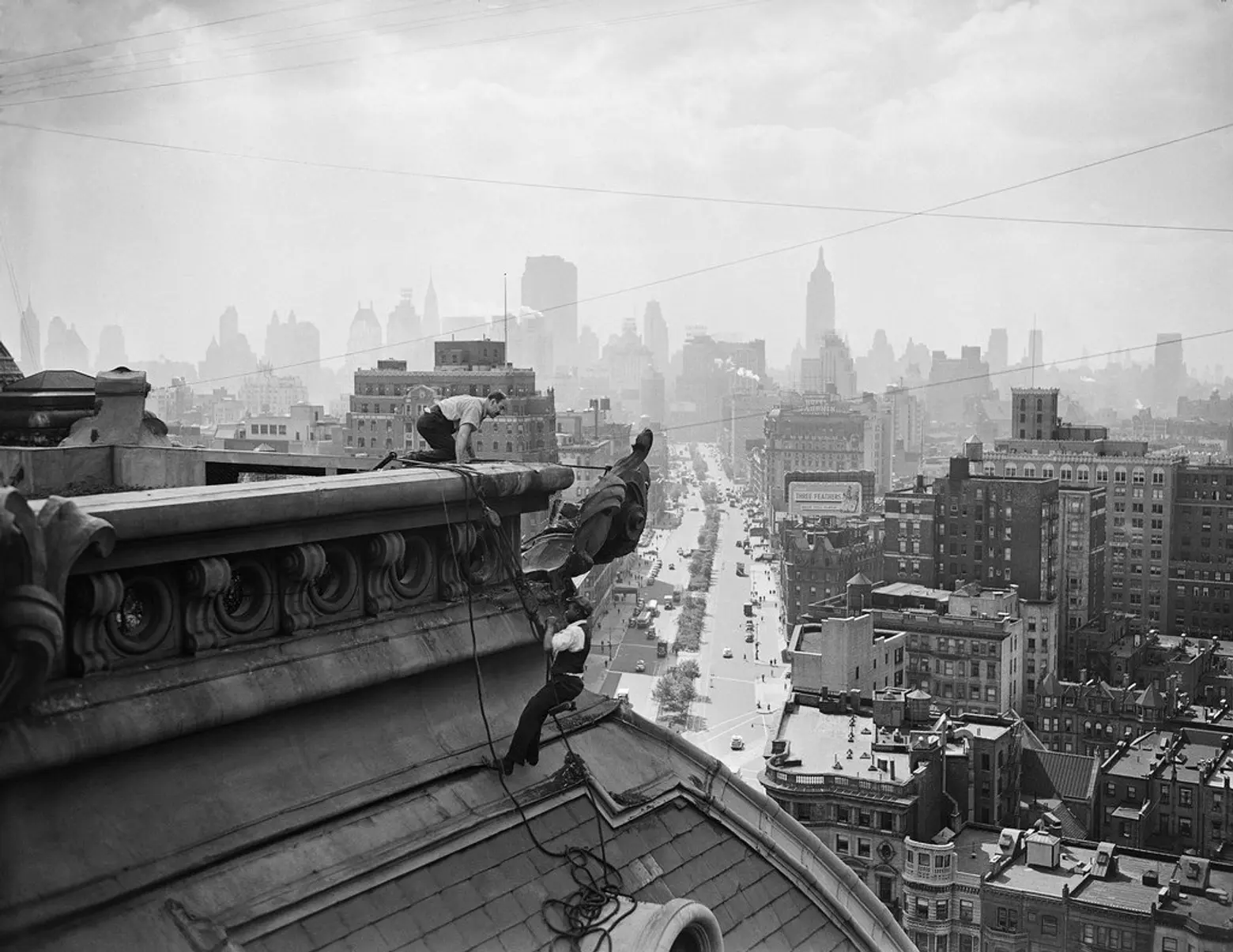
Workers lower a 100-pound metal cornice from the Hotel Ansonia on September 22, 1942. The Stanford White-designed building scrapped thousands of pounds of its metal ornamentation to aid in the war effort.
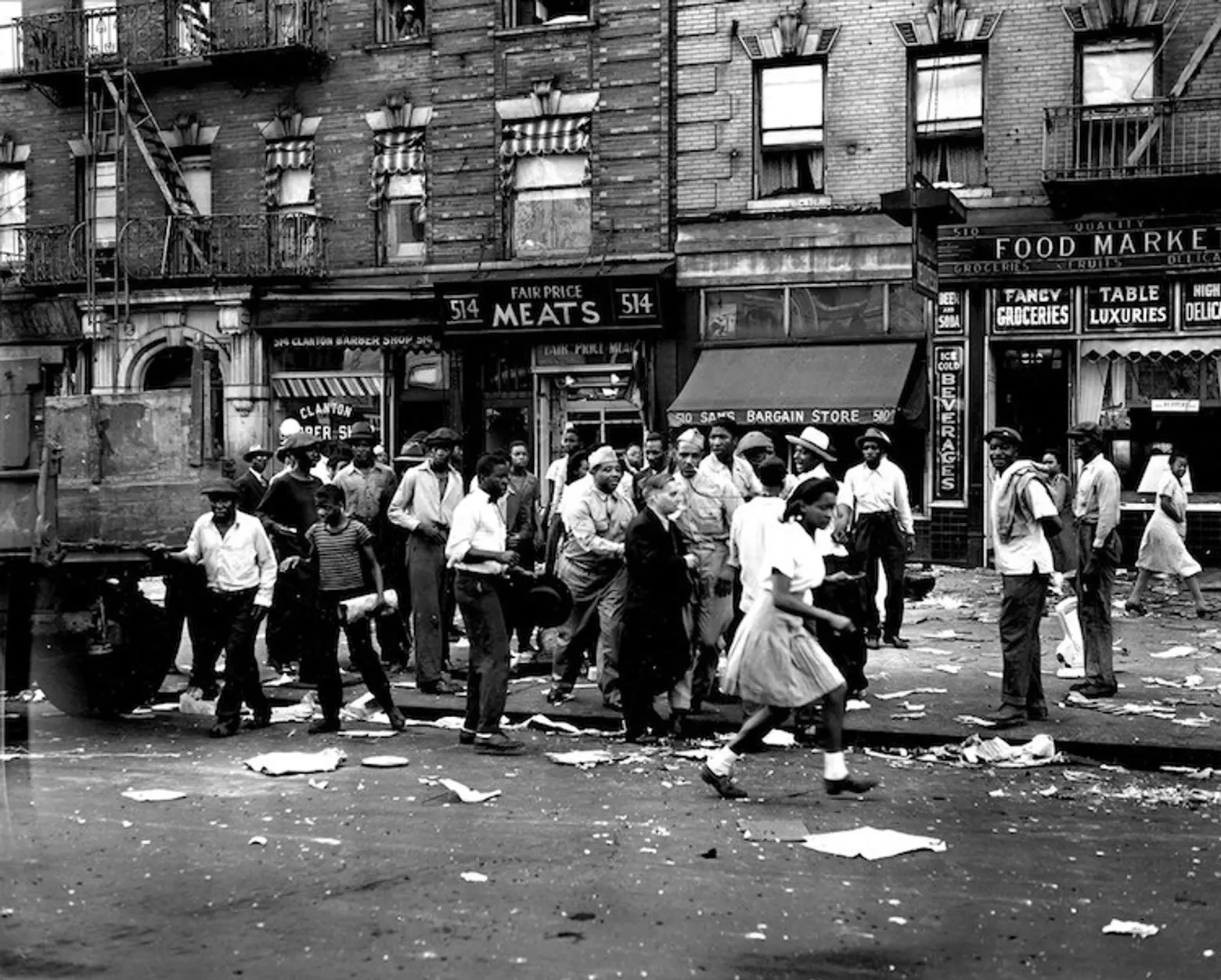
This shot from August 1943, shows two black Army soldiers helping a white man who was involved in a race riot in Harlem.
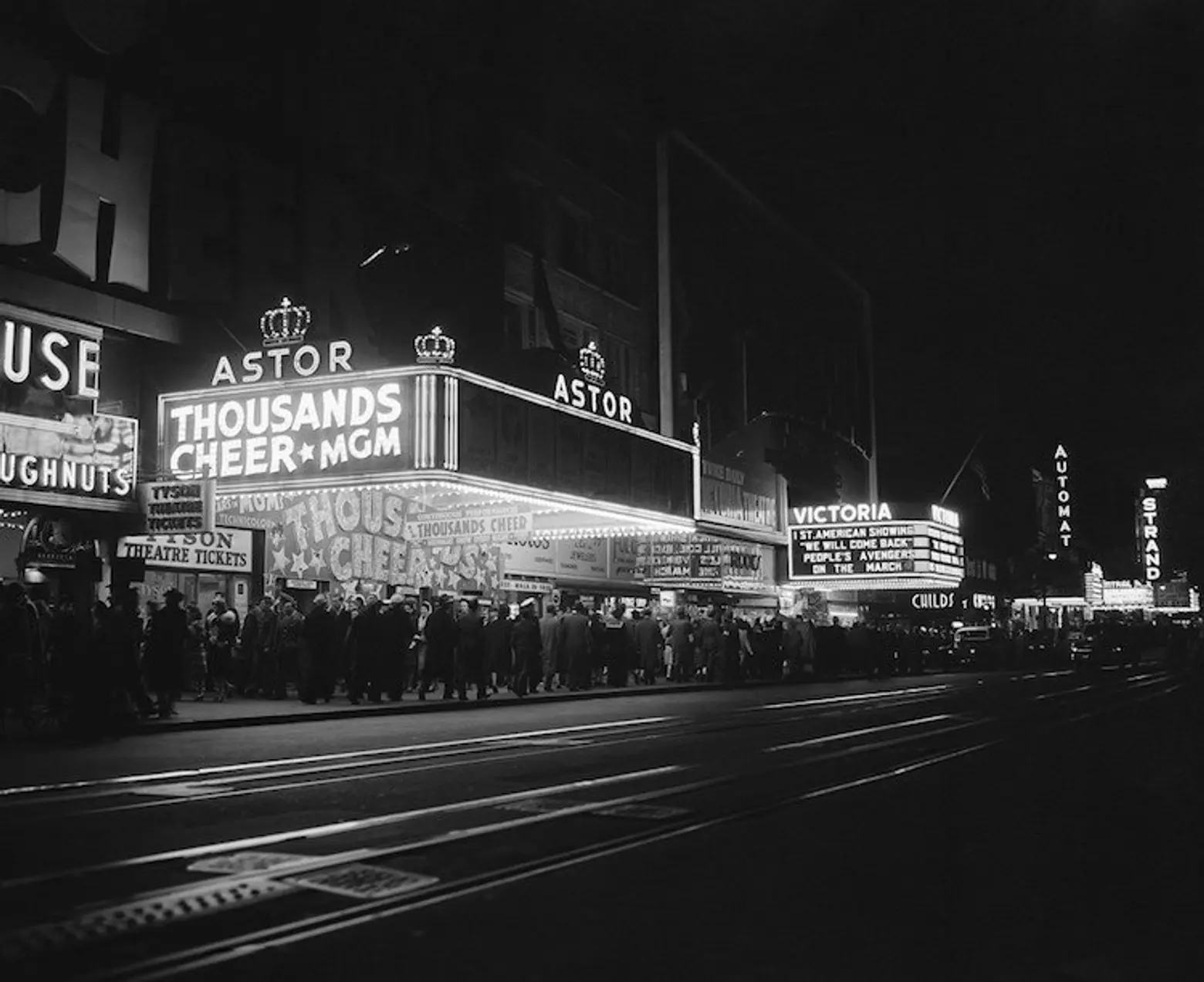
On November 2, 1943, Broadway’s theater marquees light up after 18 months of darkness. Previously, they could only illuminate underneath their marquees so theatergoers could find their way in.
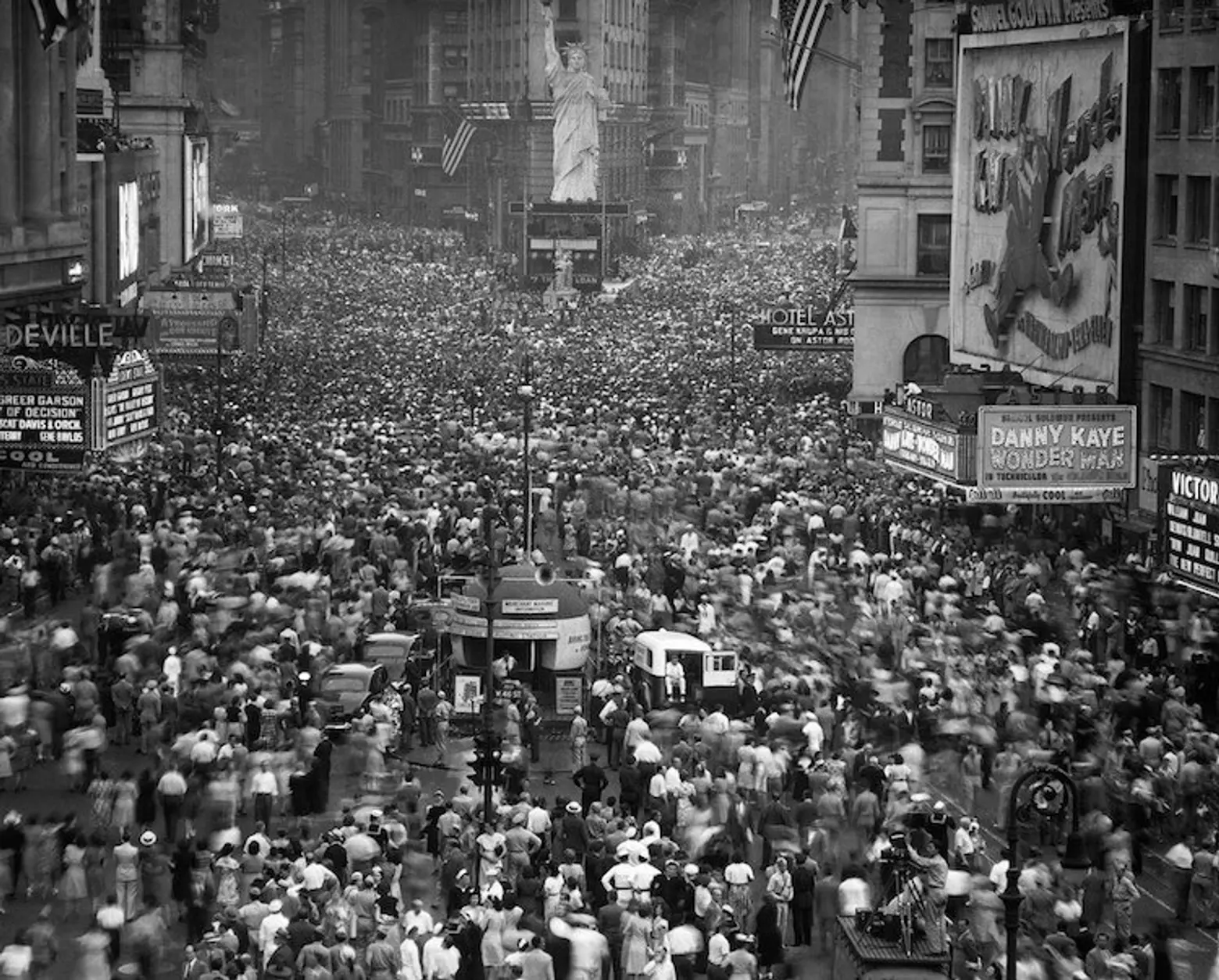
On August 14, 1945, a huge crowd gathers in Times Square to celebrate the news that the Japanese accepted the allies terms of surrender.
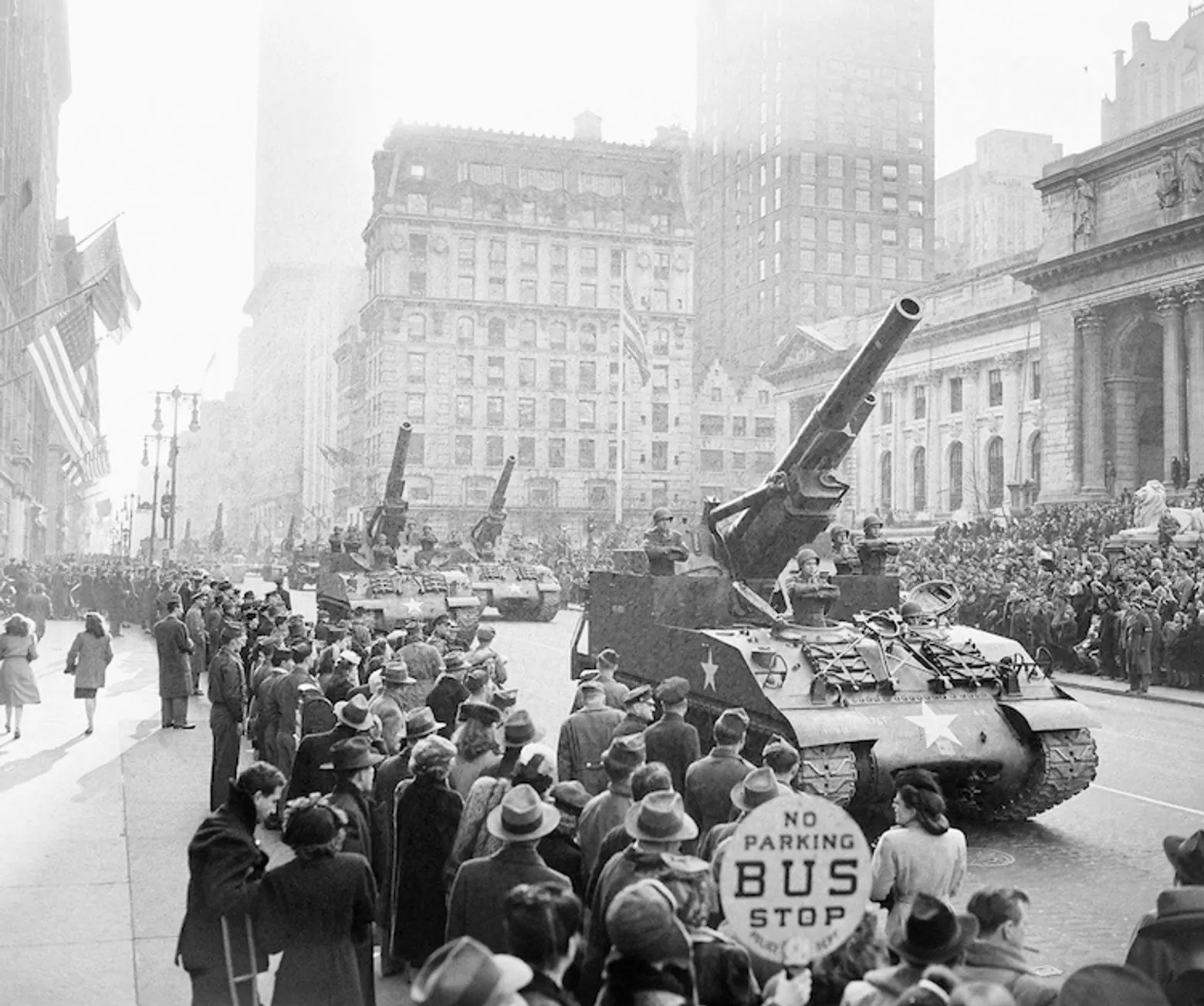
The Victory Parade of the 82nd Airborne Division marches on Fifth Avenue on January 12, 1946.
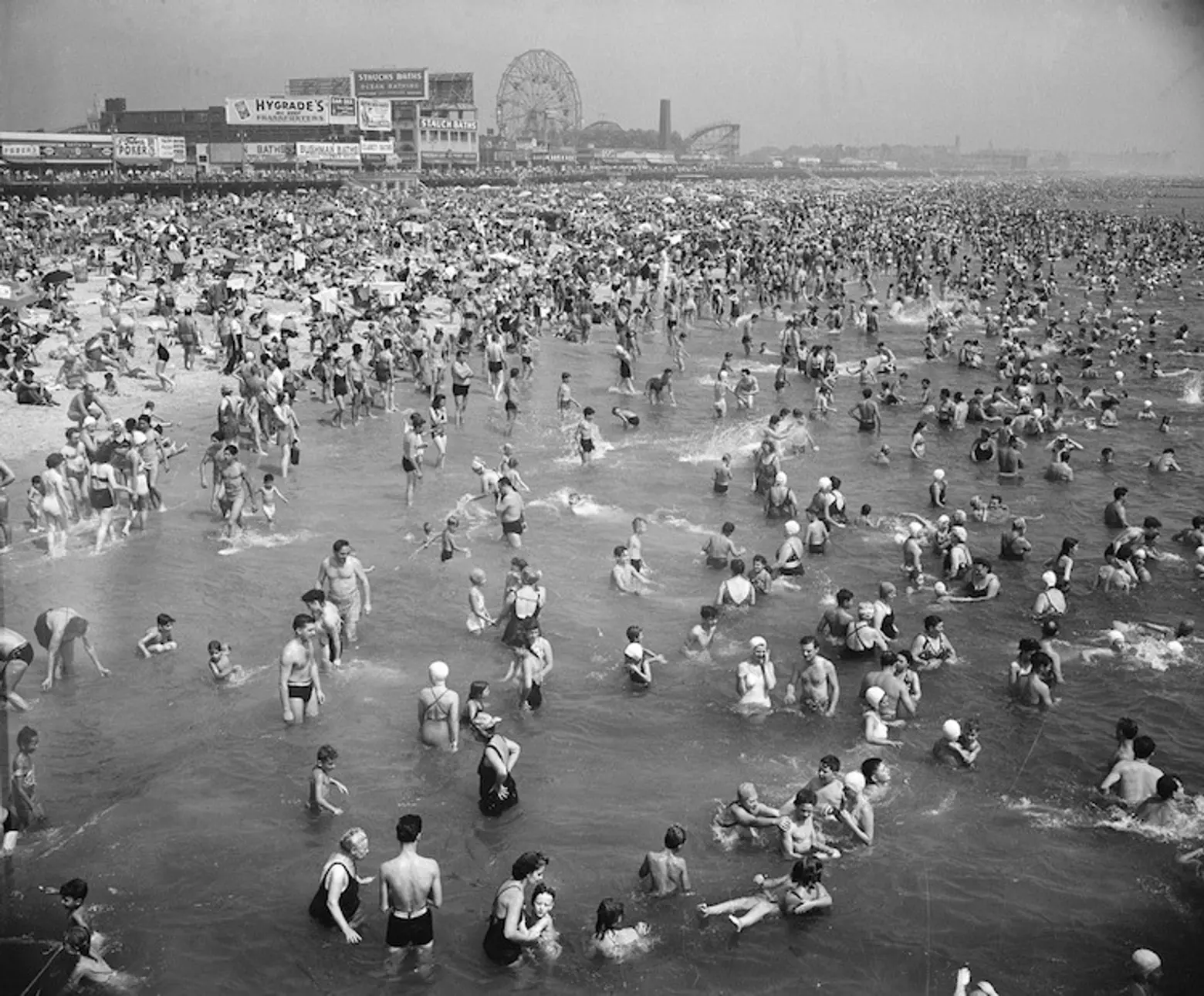
Coney Island in 1948.
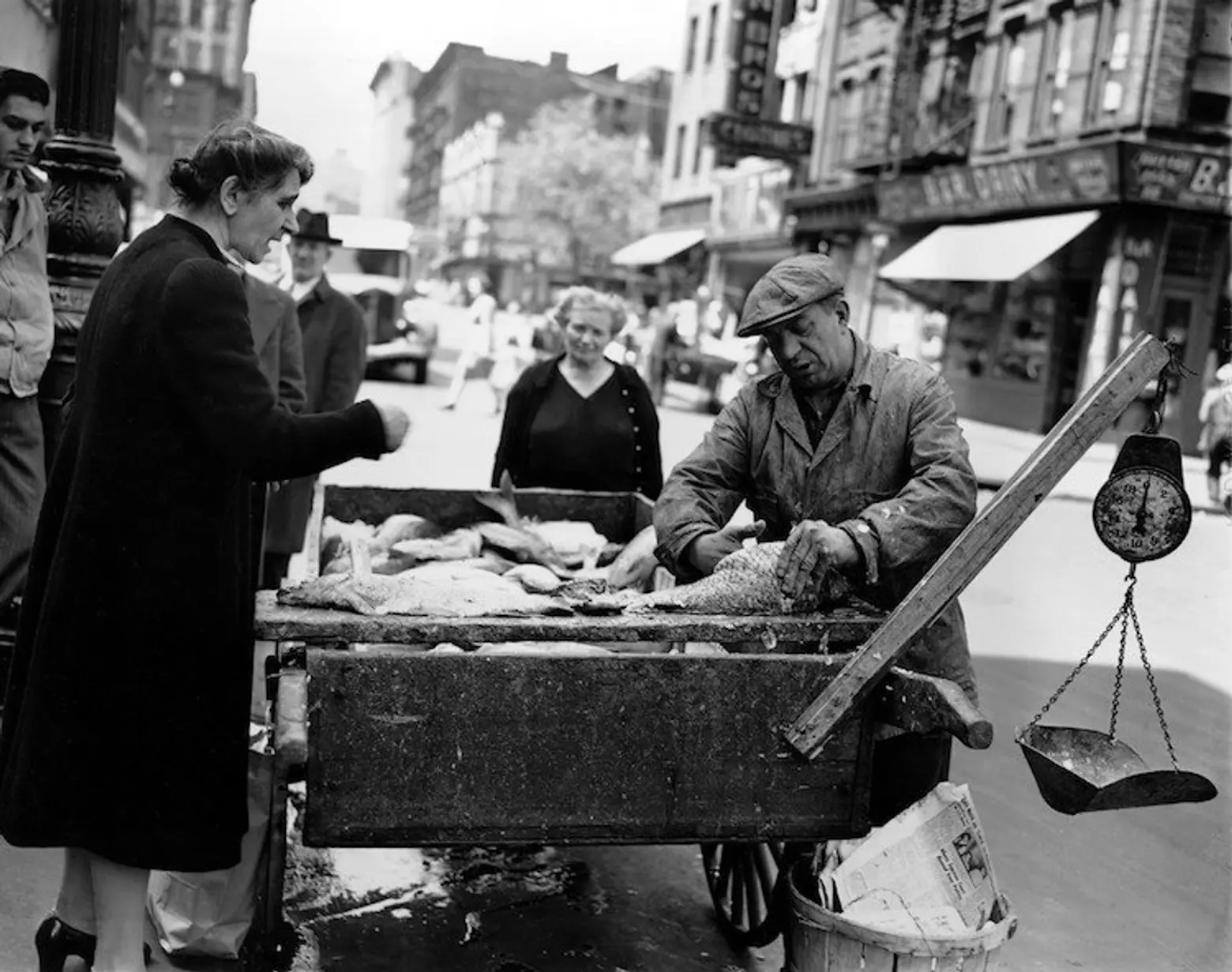
In June 1946, a pushcart vendor cleans fresh fish at the corner of Orchard and Stanton Streets in the Jewish Lower East Side. As 6sqft previously reported, “Between 1880 and 1924, 2.5 million mostly-impoverished Ashkenazi Jews came to the US and nearly 75 percent took up residence on the Lower East Side. According to the Library of Congress, by 1900, more than 700 people per acre were settling in a neighborhood lined with tenements and factories.”
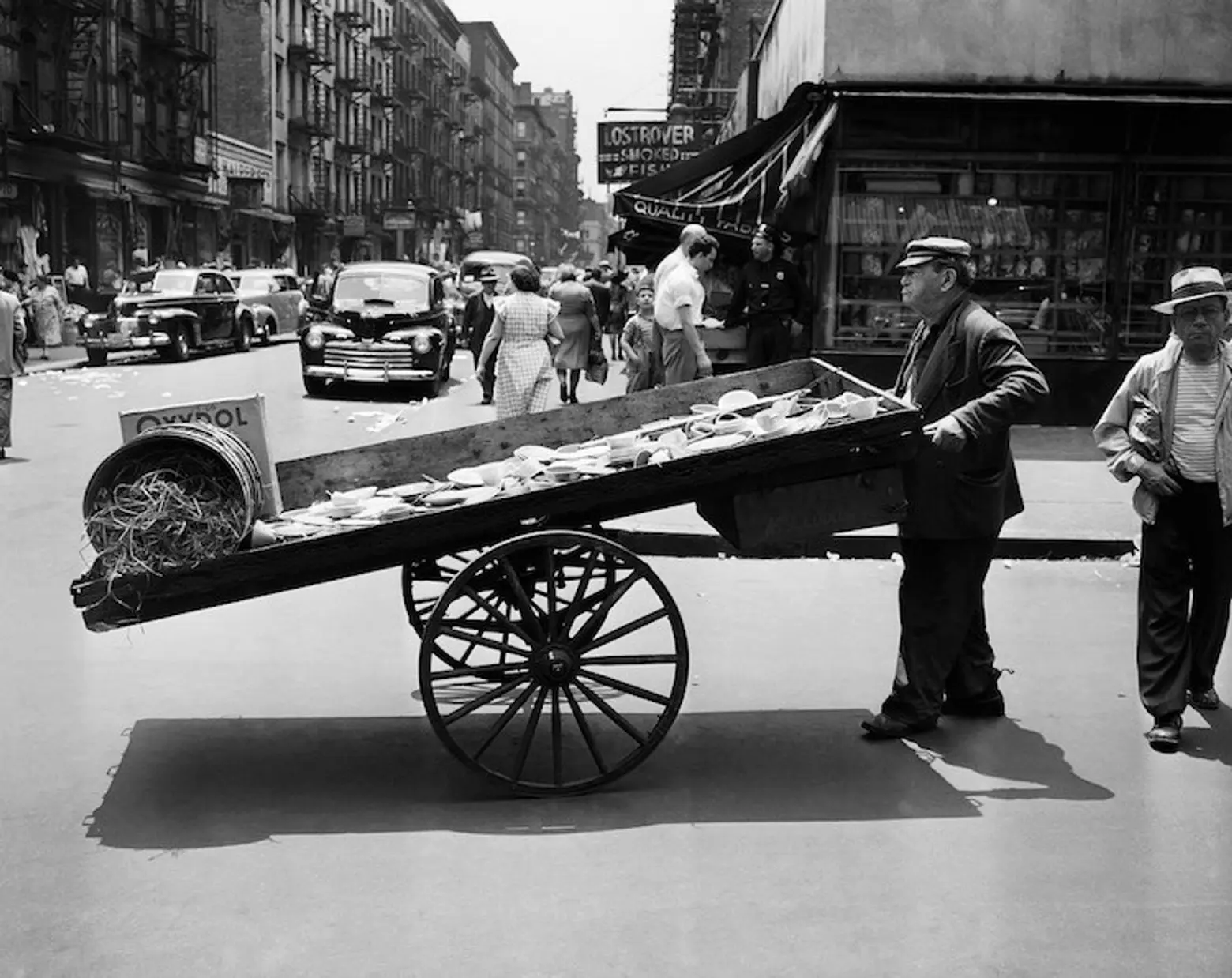
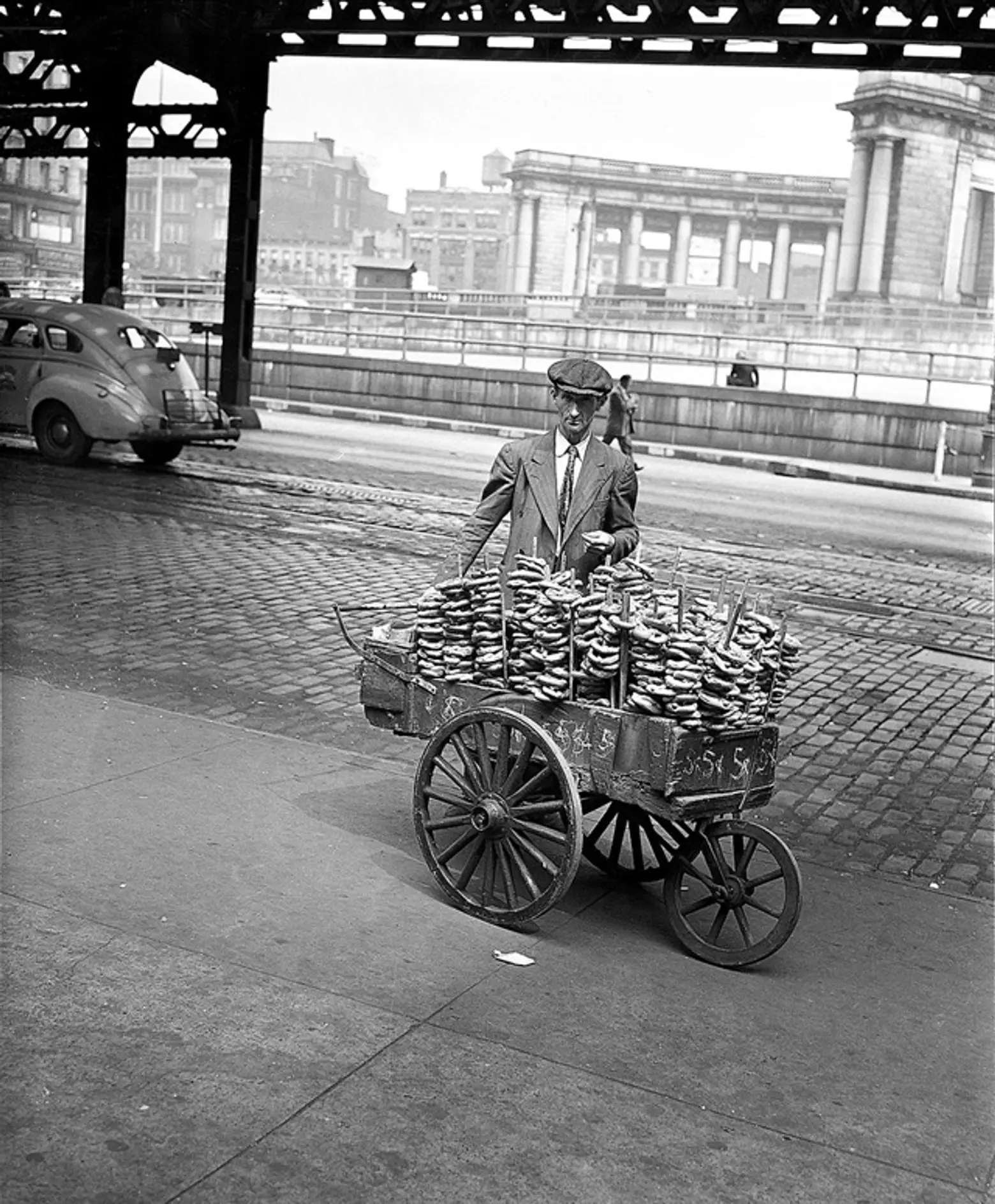

A fabric sale on the Lower East Side in June 1946.
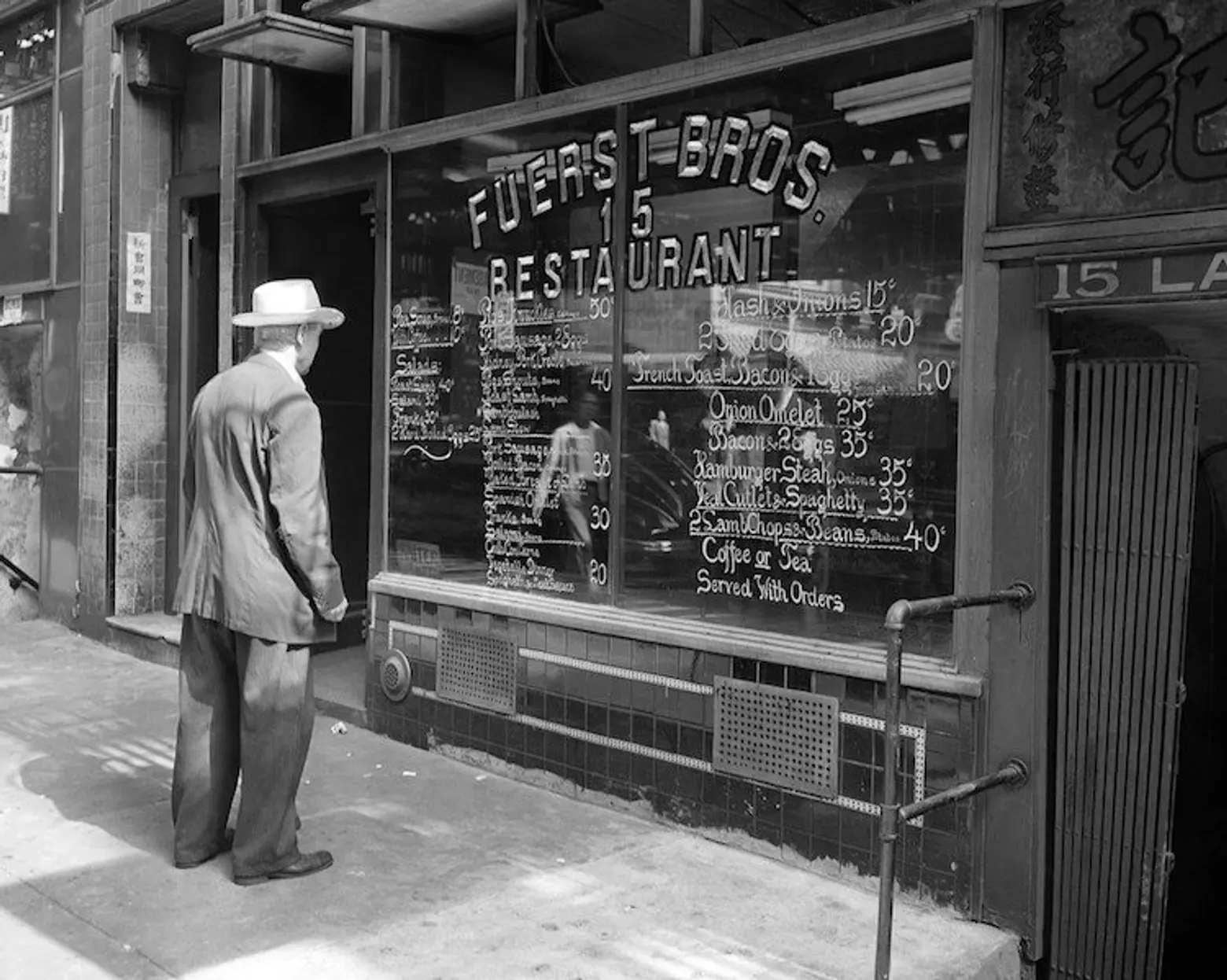
Outside a restaurant on the Bowery in September 1947. Prices in the Lower East Side neighborhood are going up; coffee and soup, now a dime, used to be a nickel; dormitories are up to 35 cents from 20; and a room with just a partition and an electric light is up to 40 cents from 30.
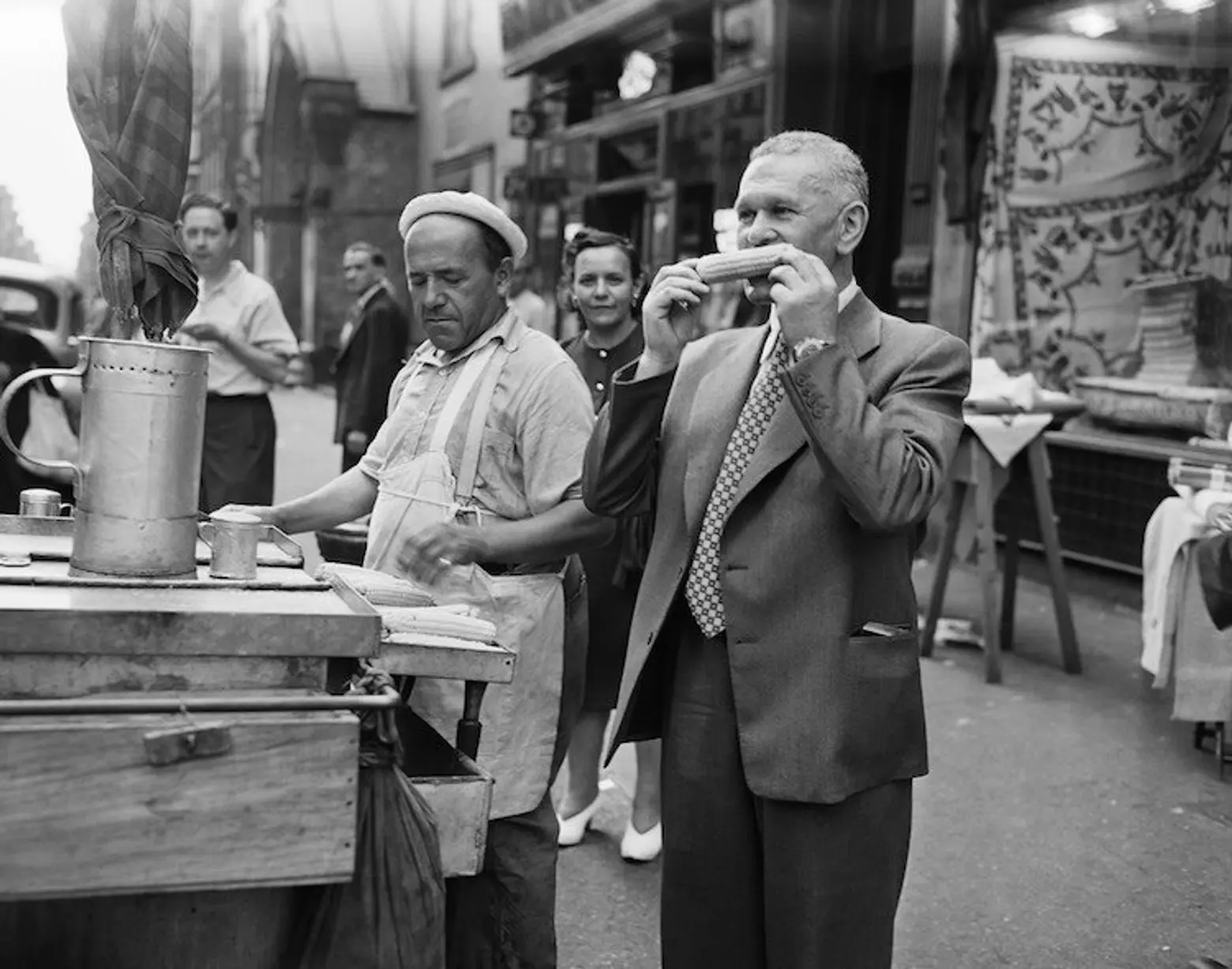
Enjoying a hot ear of corn from a street vendor in 1947.
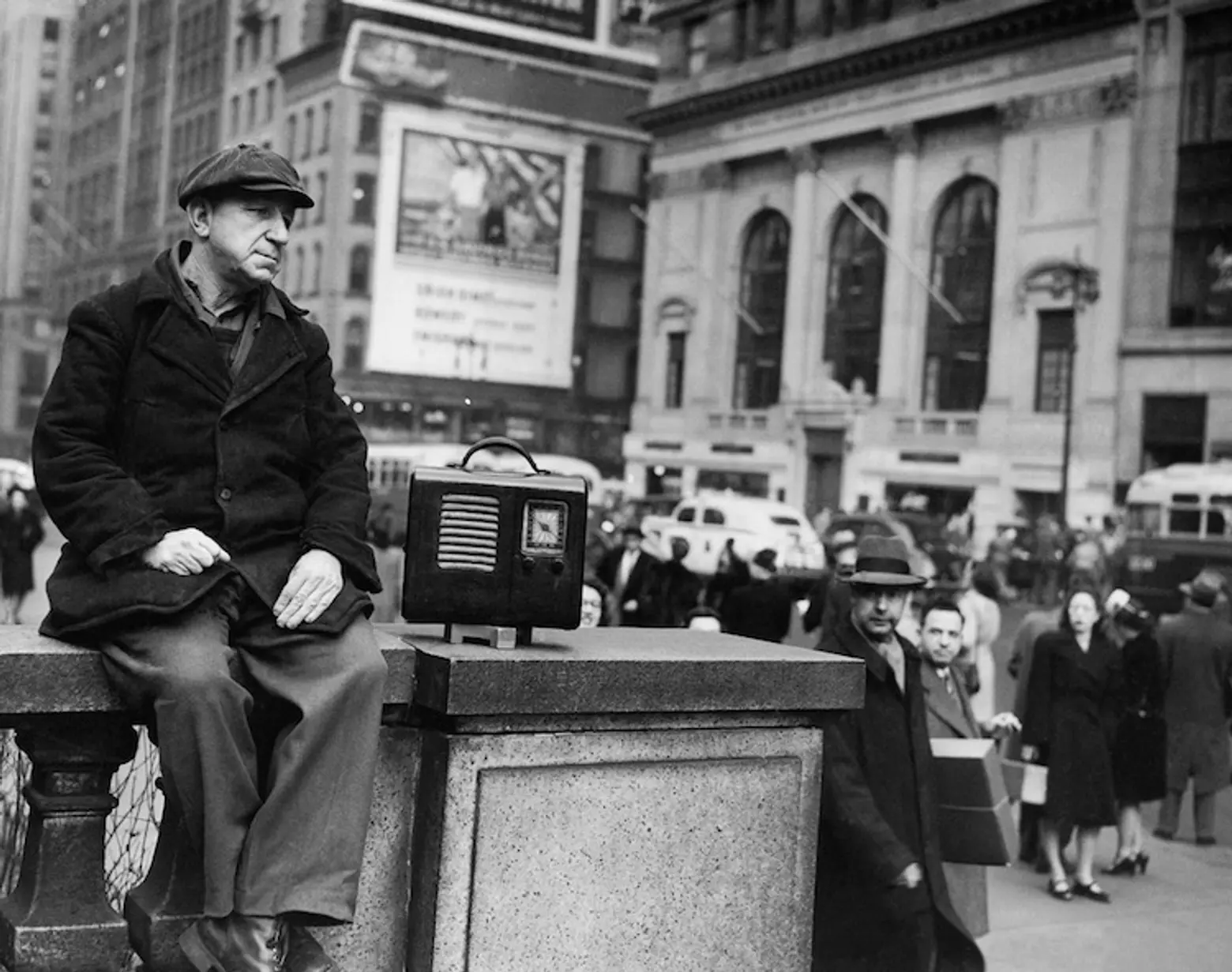
A longeshorman listens to his radio outside the New York Public Library in 1947.
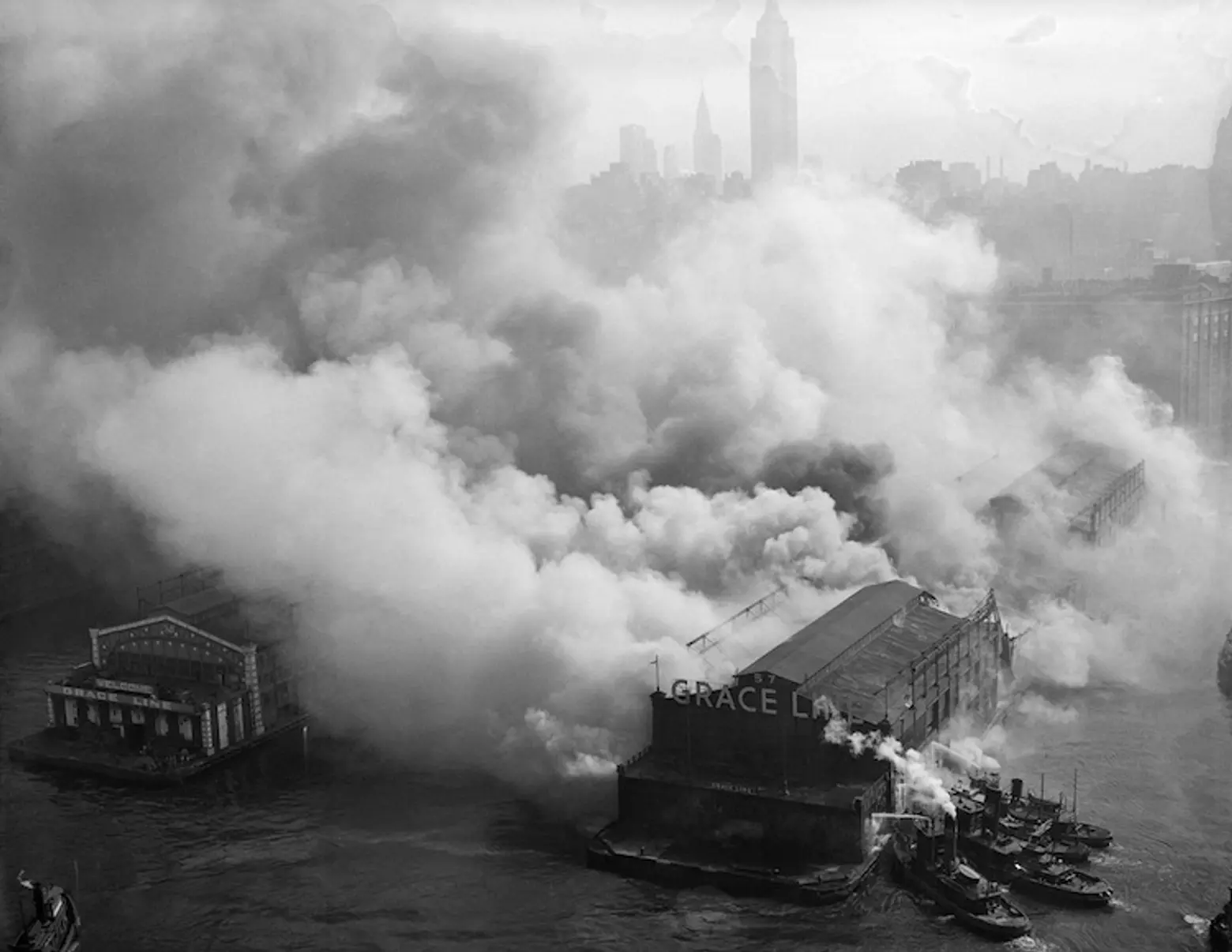
On September 29, 1947, a massive fire swept through Pier 57 at 15th Street. More than 200 firefighters and numerous fireboats were at the scene, but after burning for more than 16 hours, most of the pier crumbled into the Hudson River. It was determined that the fire originated in the structure’s wooden piles. Construction on a replacement pier began in 1950.
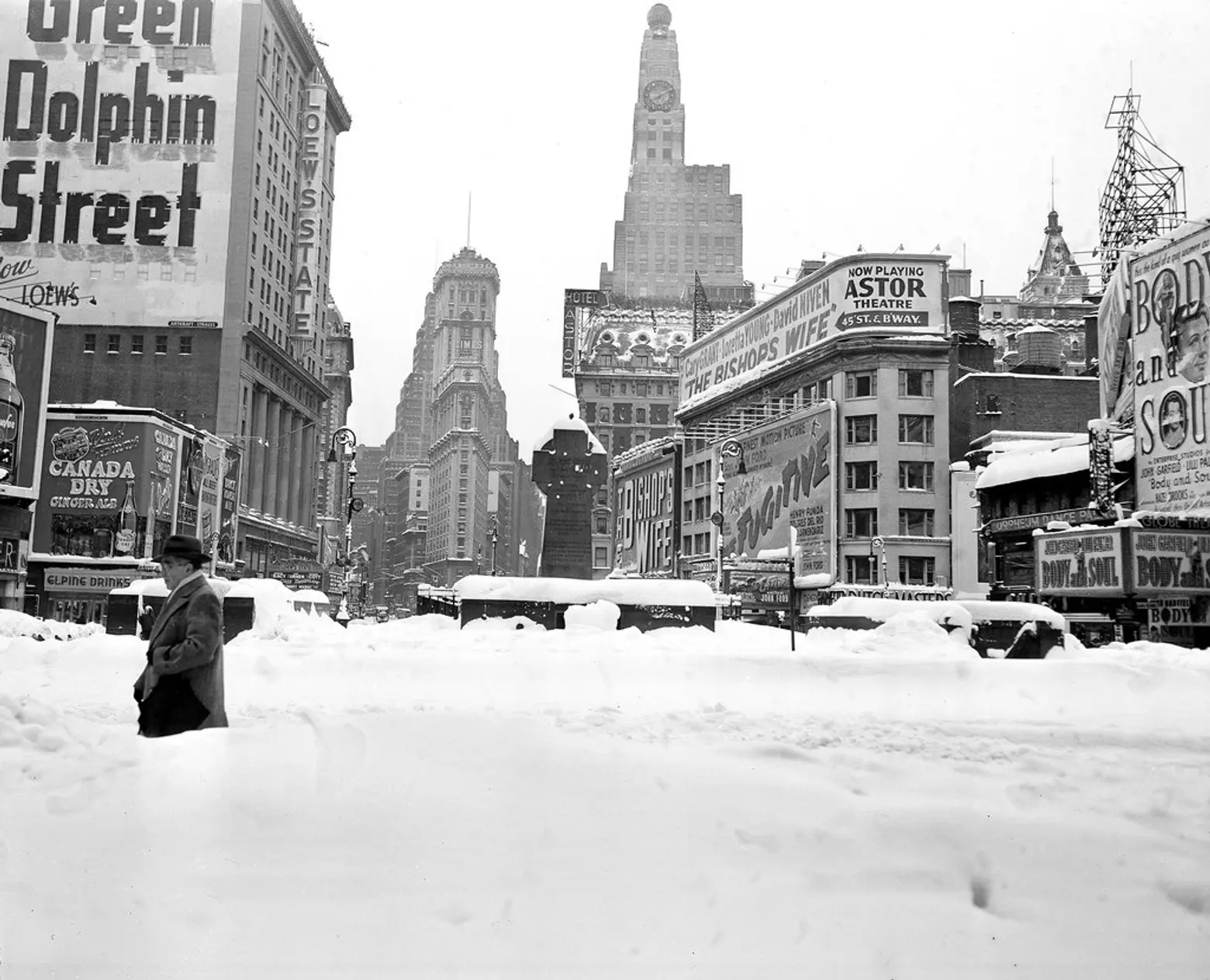
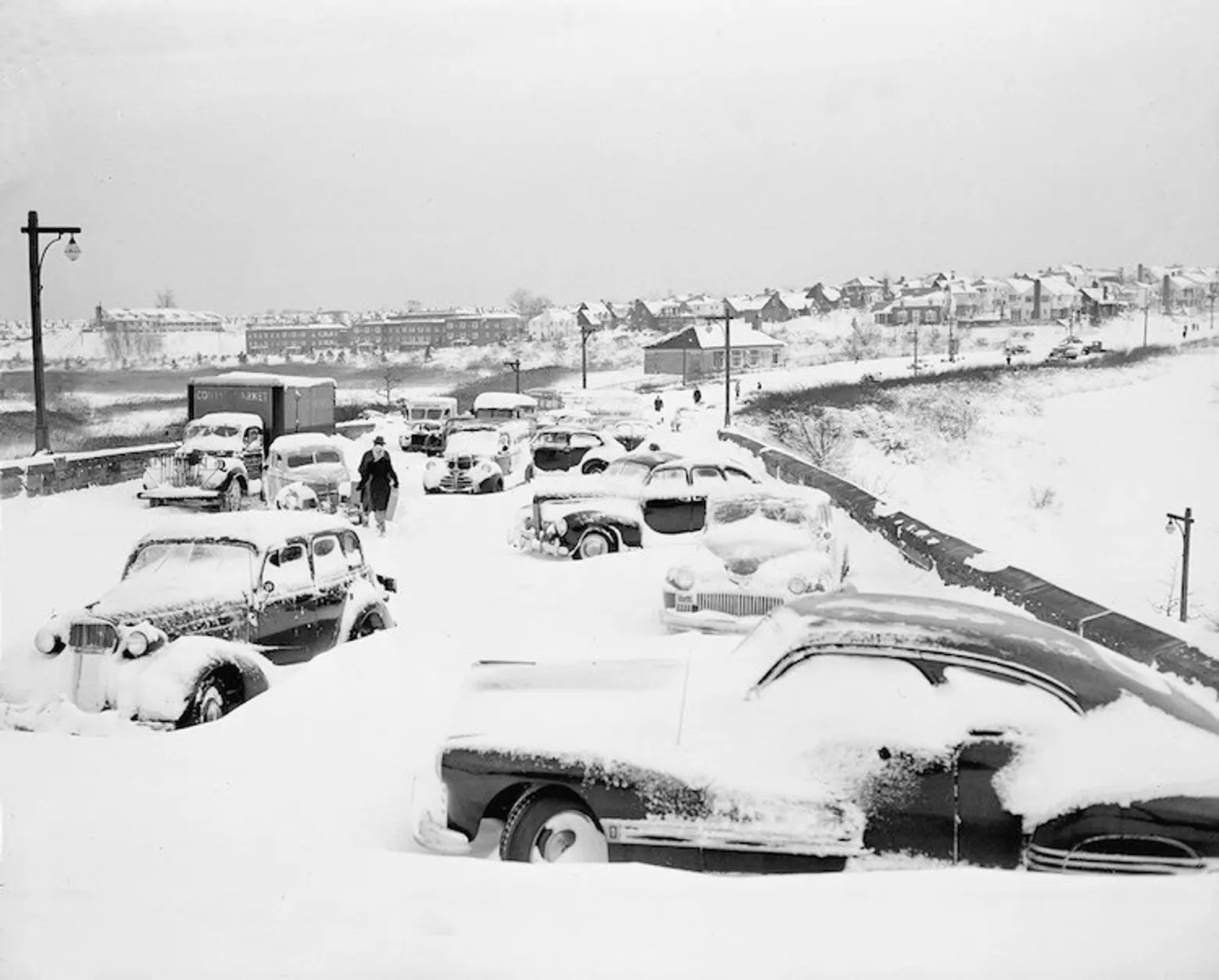
On December 26, 1947, NYC received a record-breaking 25.8-inch snowfall. Above, 21 cars, 3 buses and 2 trucks had to be abandoned on the Grand Central Parkway at Union Turnpike in Kew Gardens.
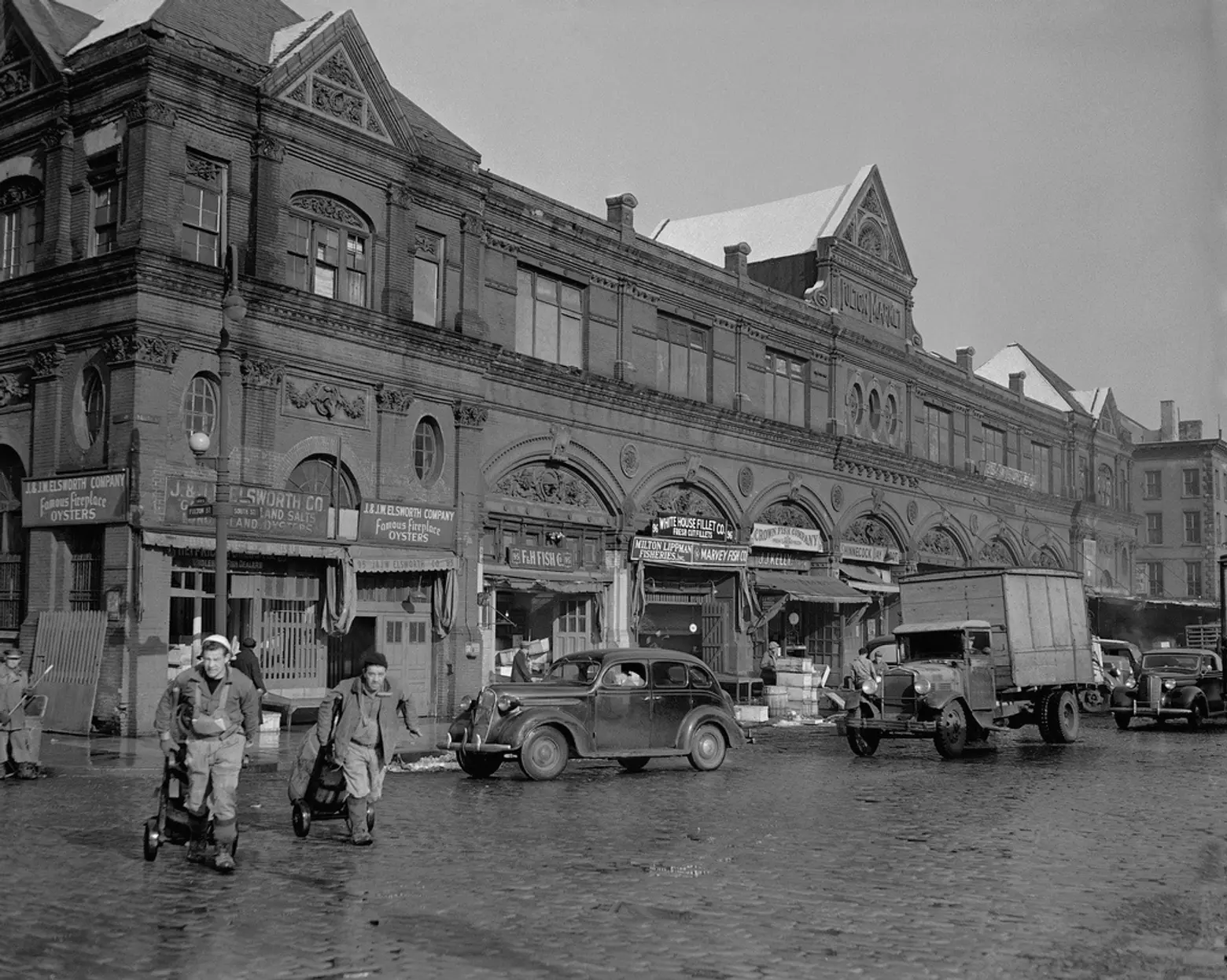
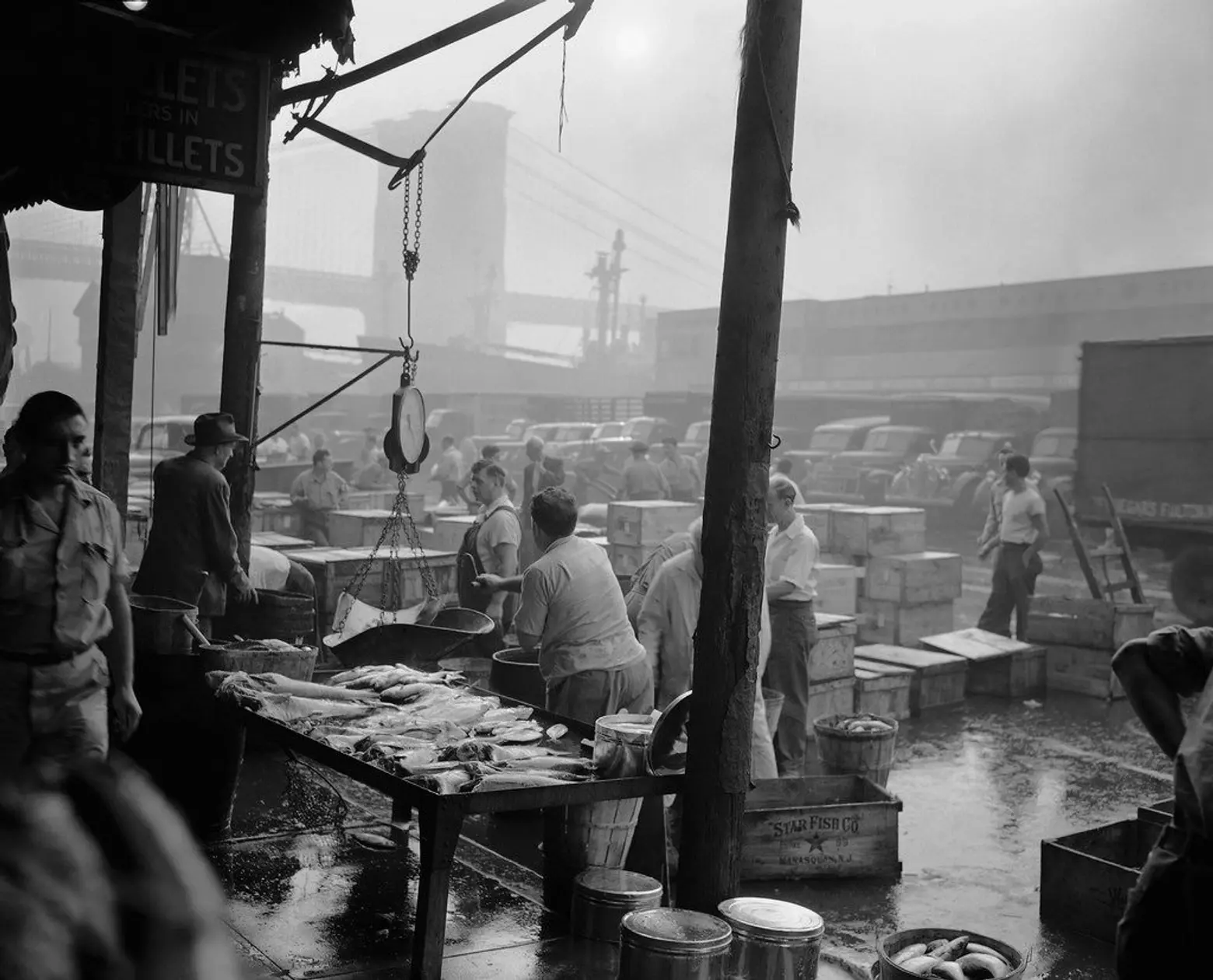
An early morning in the Fulton Fish Market in 1948.
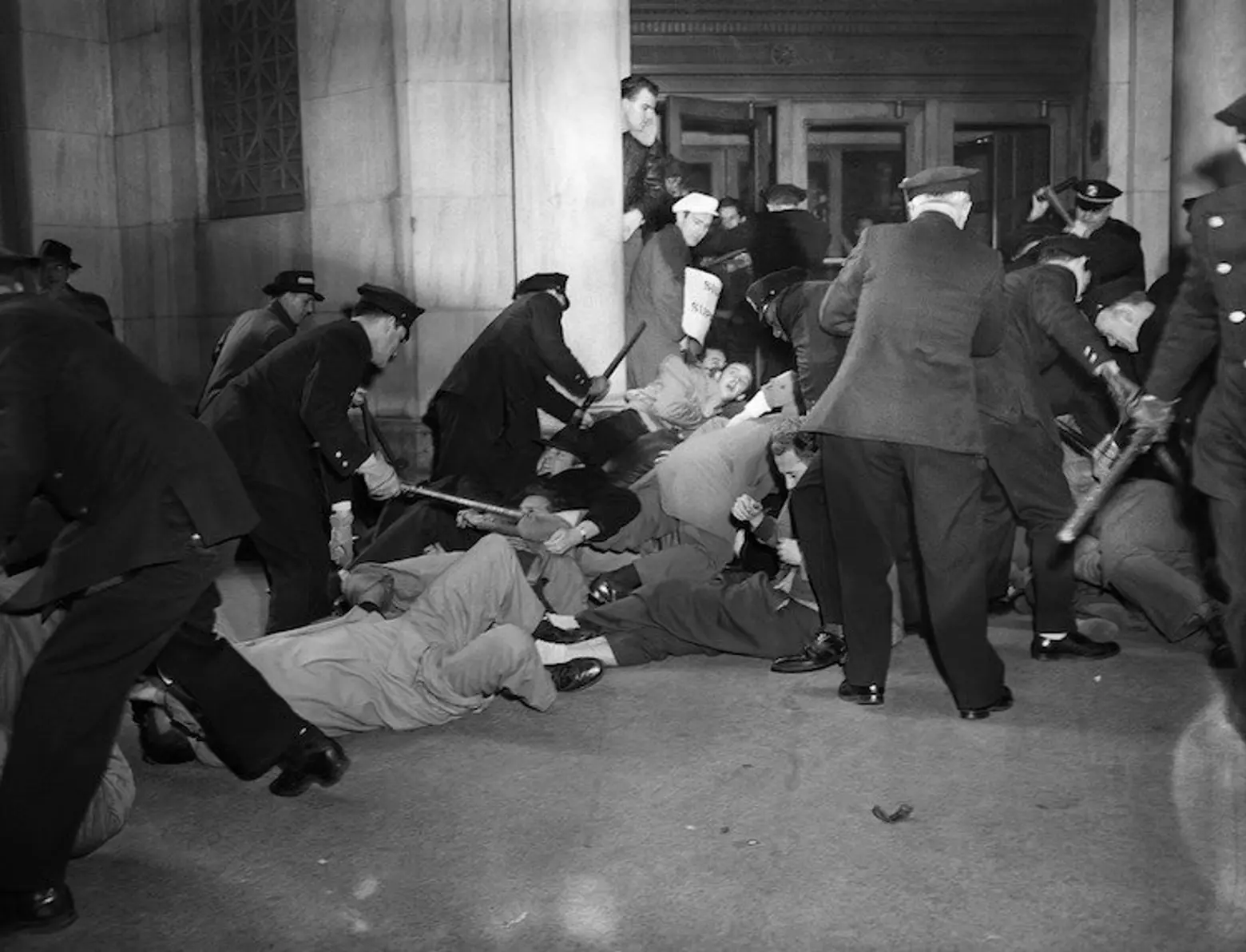
On March 30, 1948, two groups of picketers rushed police standing guard at 11 Wall Street on the second day of the United Financial Employees Union (AFL) Strike against the New York Stock Exchange.
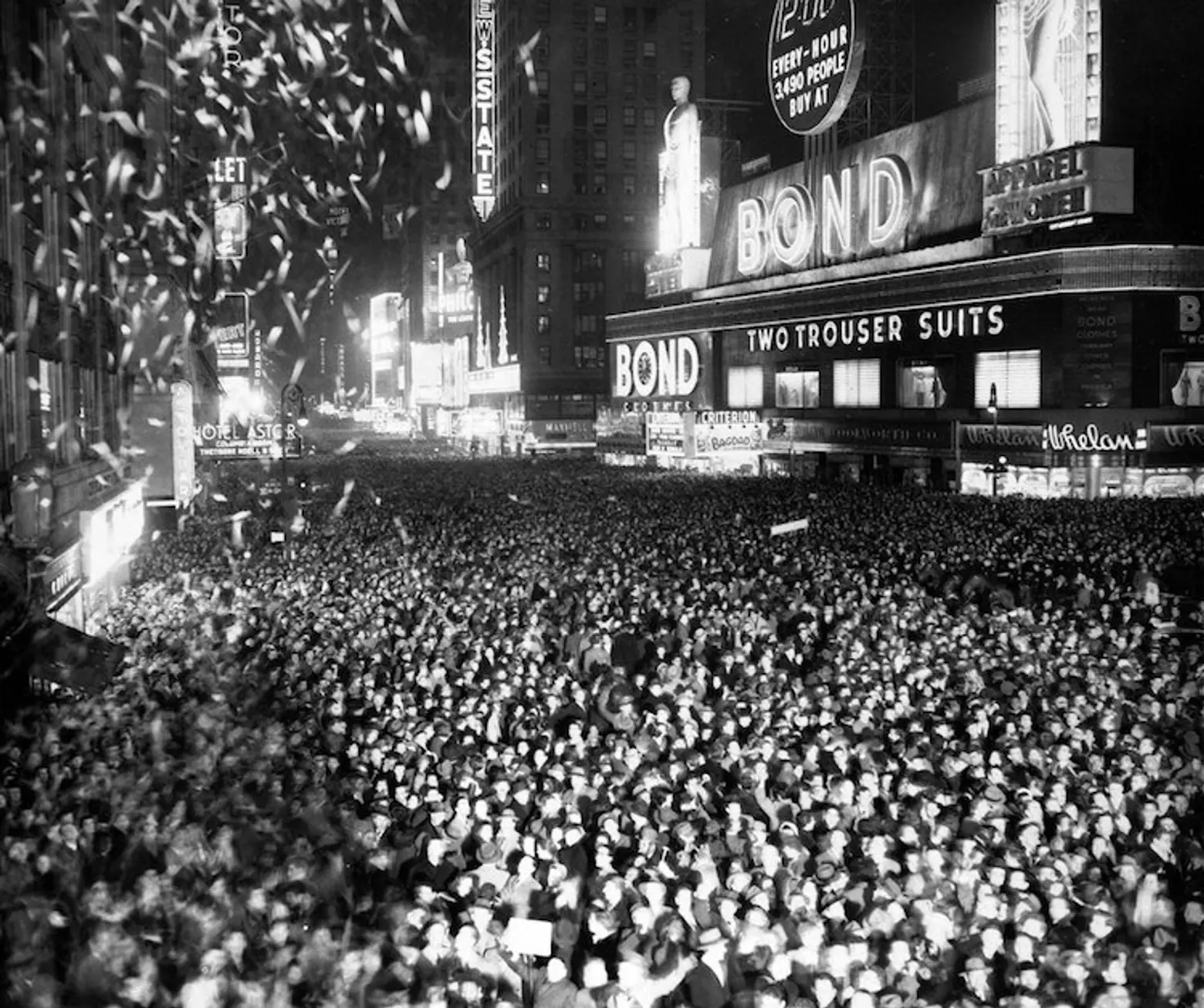
On December 31, 1949, three-quarters of a million people ring in the new year in Times Square.
RELATED:
- VIDEO: What to Expect if You Were a Tourist Visiting NYC in the 1940s
- The Urban Lens: Explore the whimsical photography of Todd Webb with former LIFE editor Bill Shapiro
- The Urban Lens: ‘Indecent exposure’ at Rockaway Beach in the 1940s
All photos via Lighthouse News/Flickr
